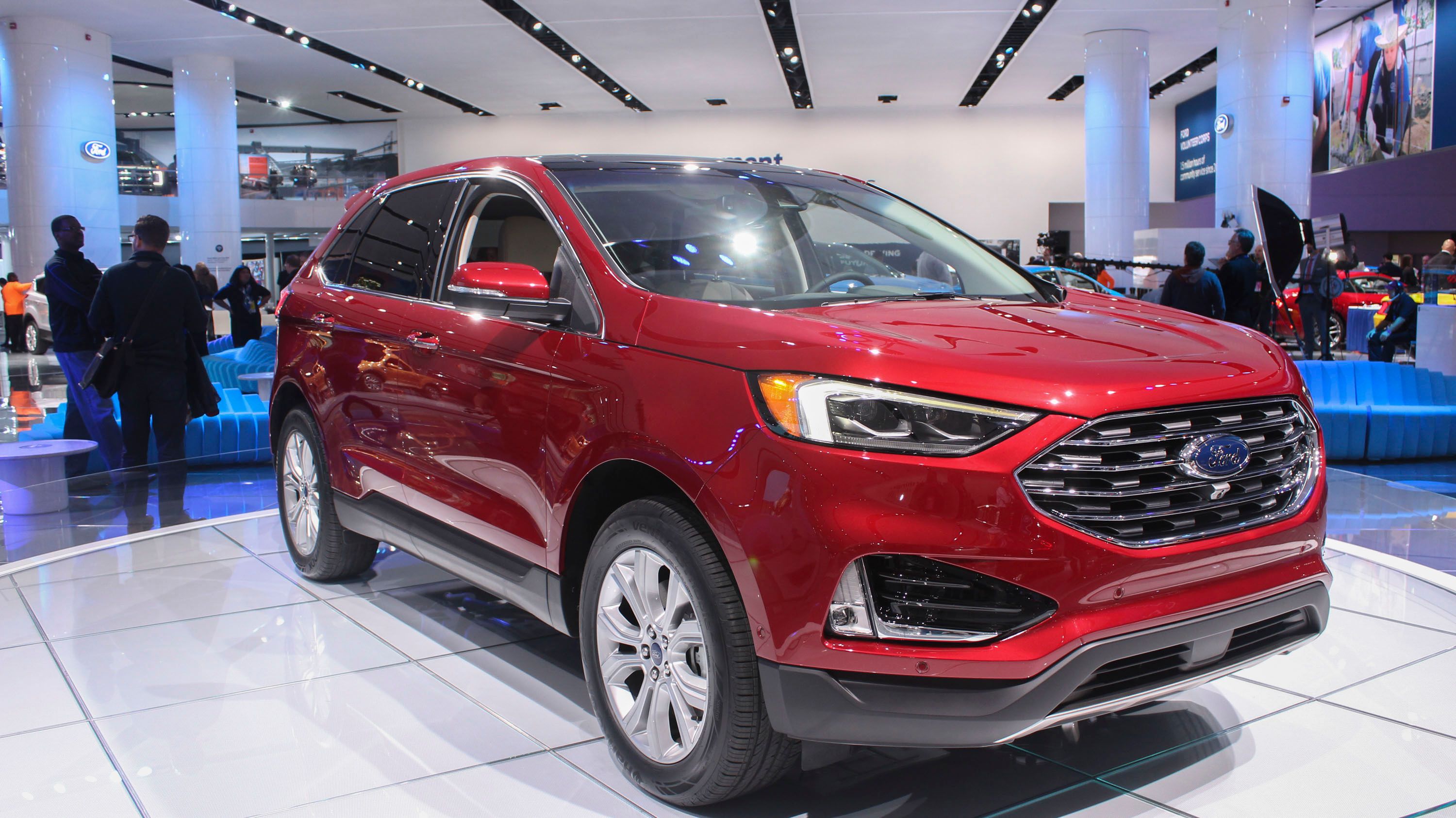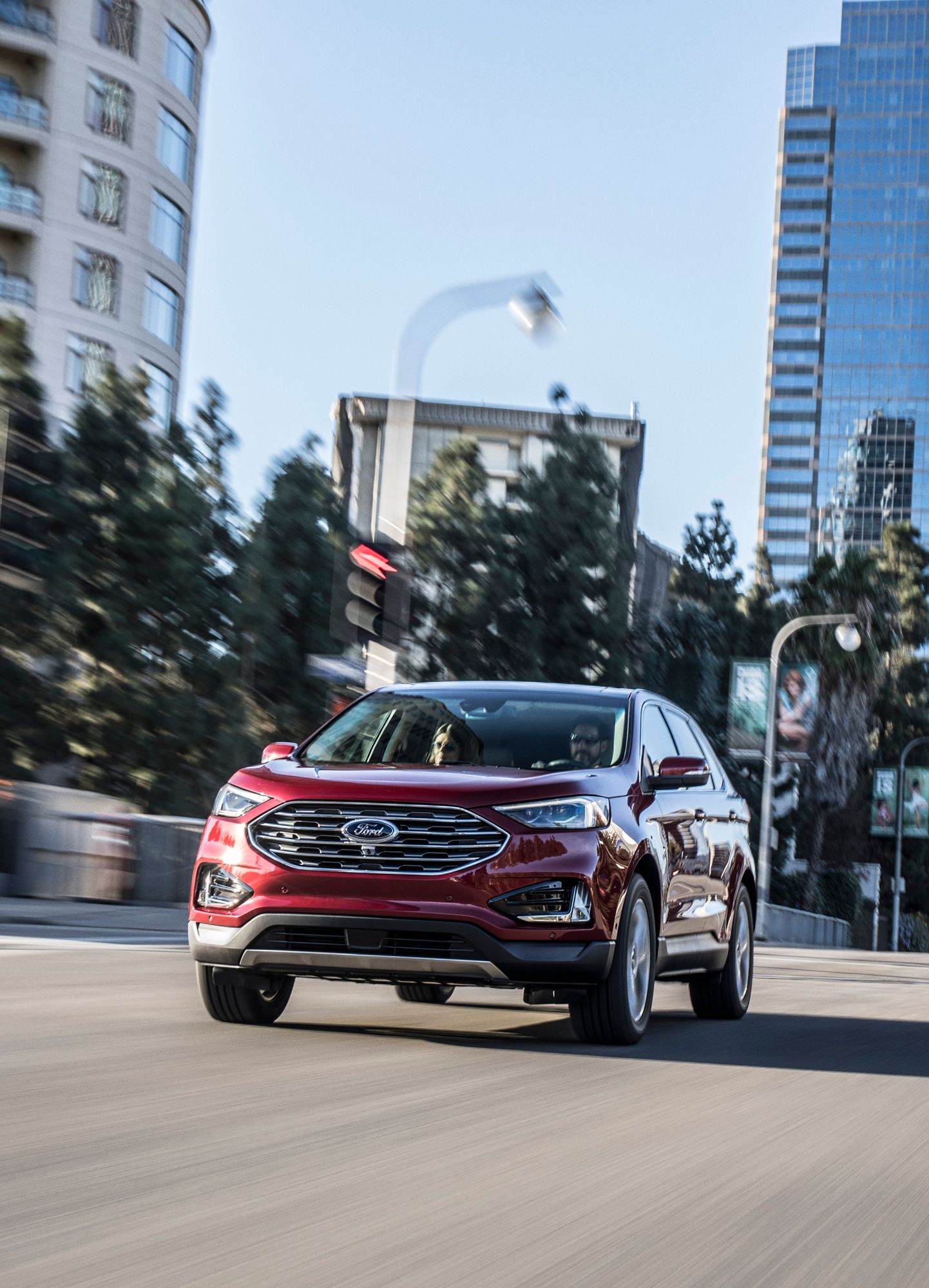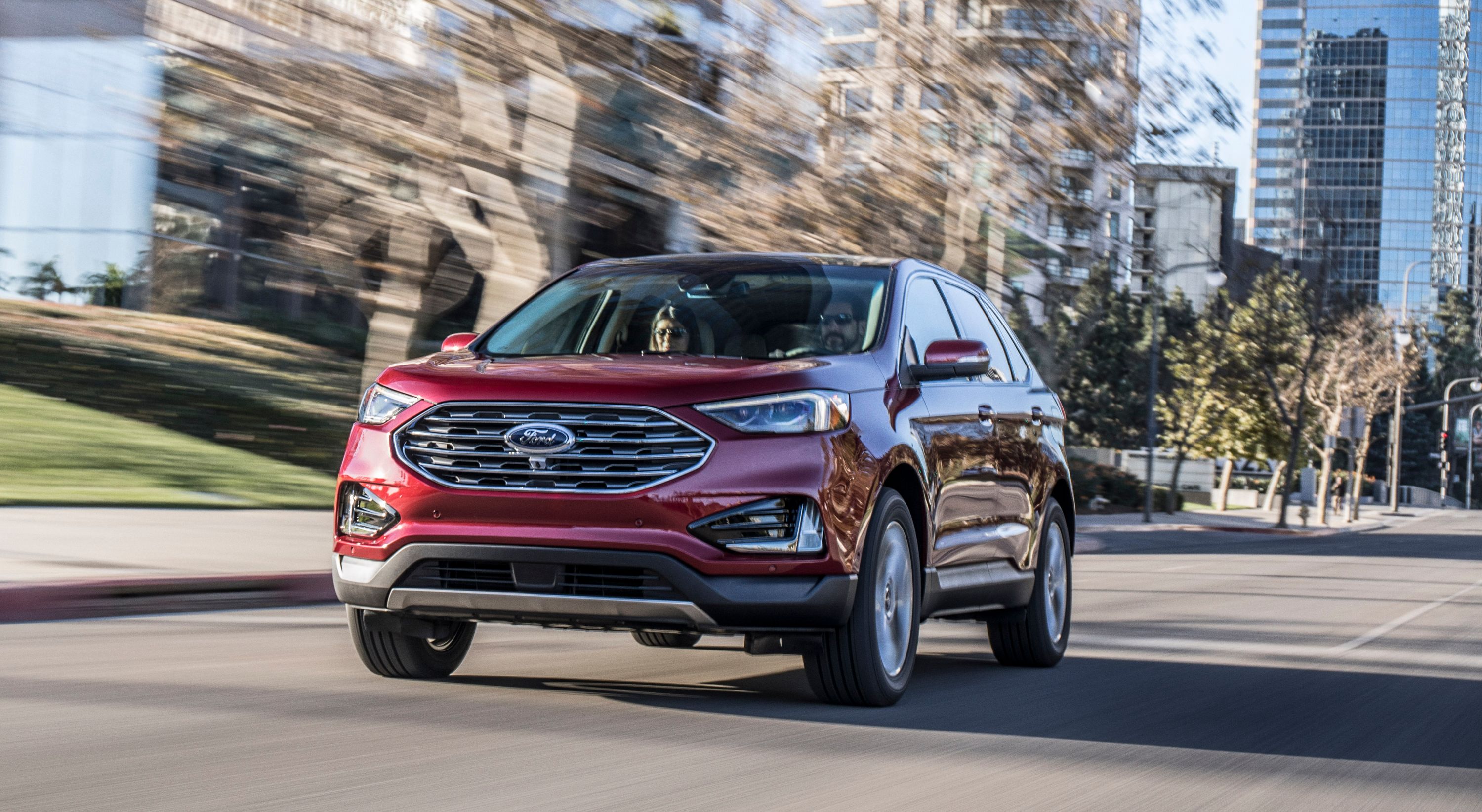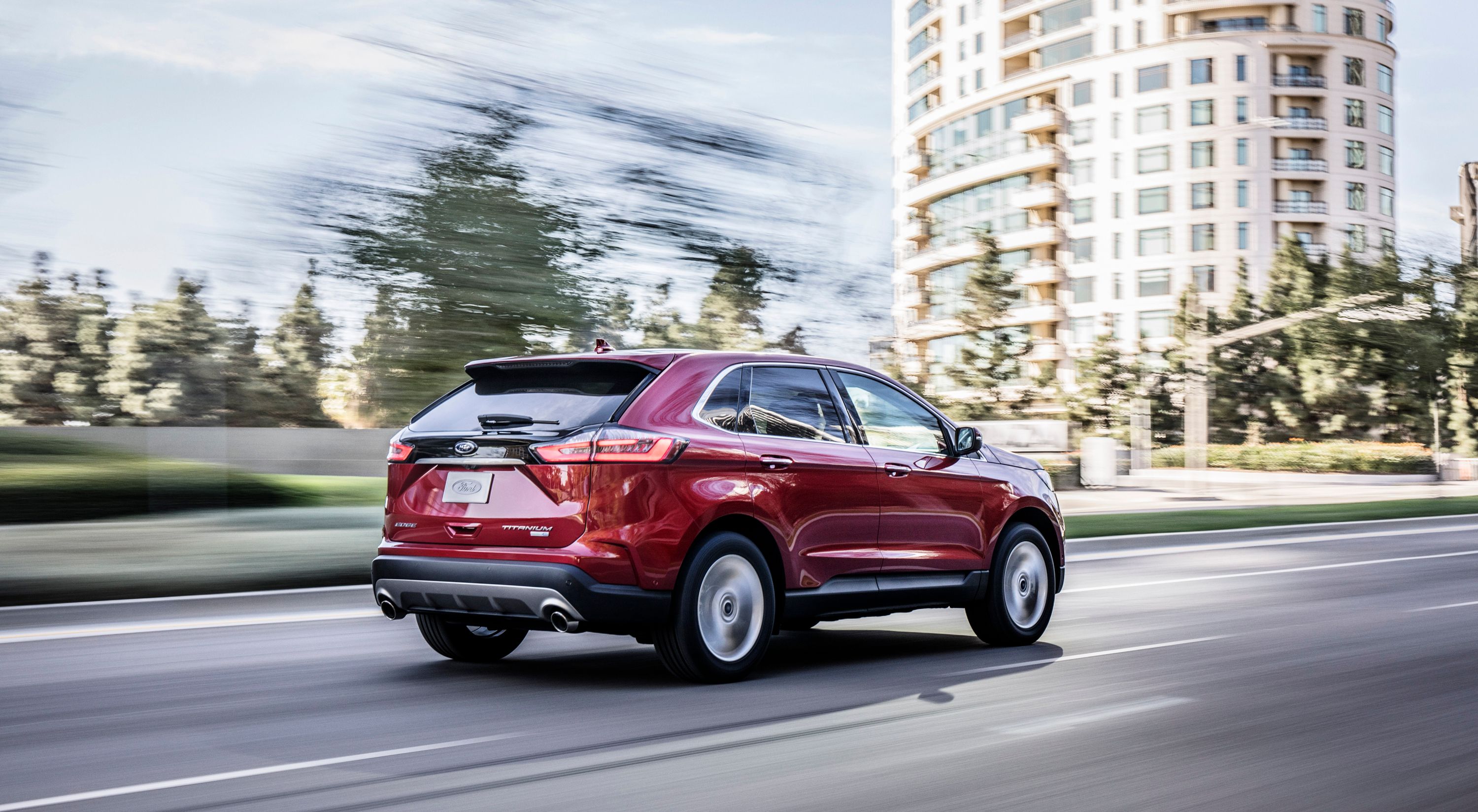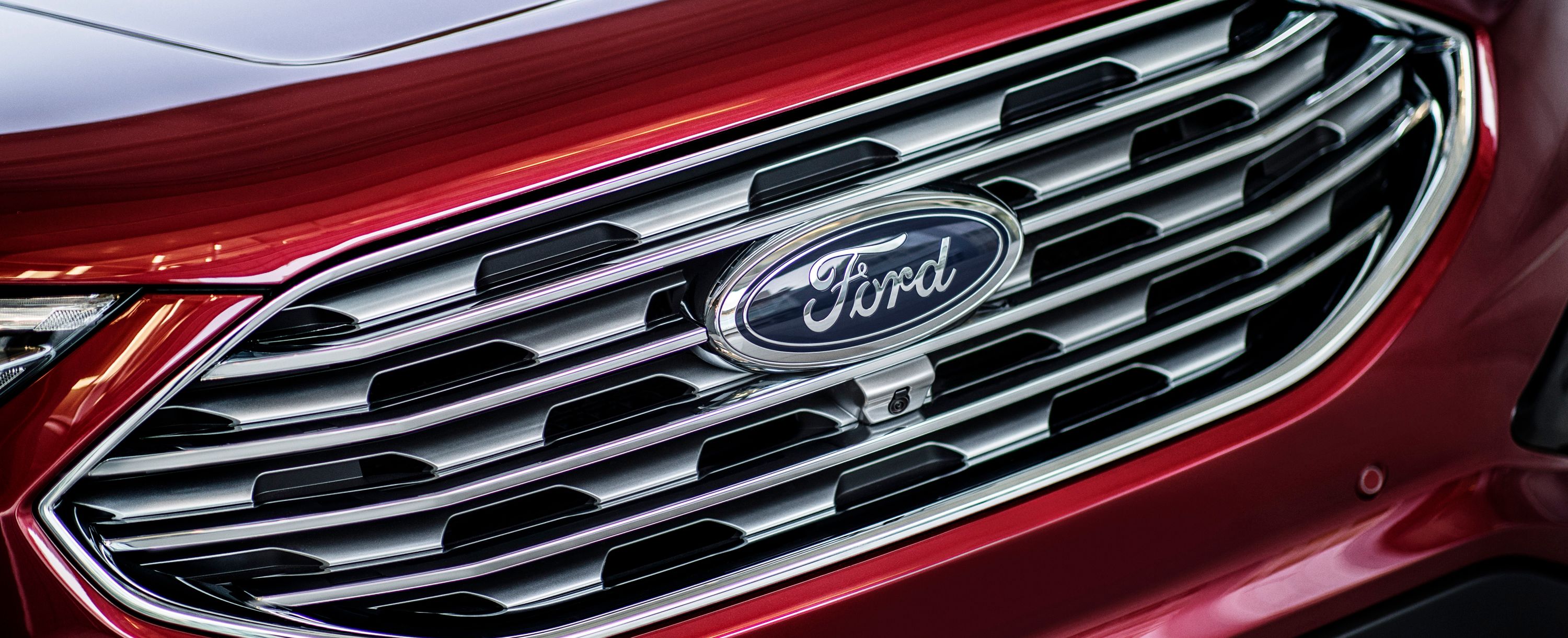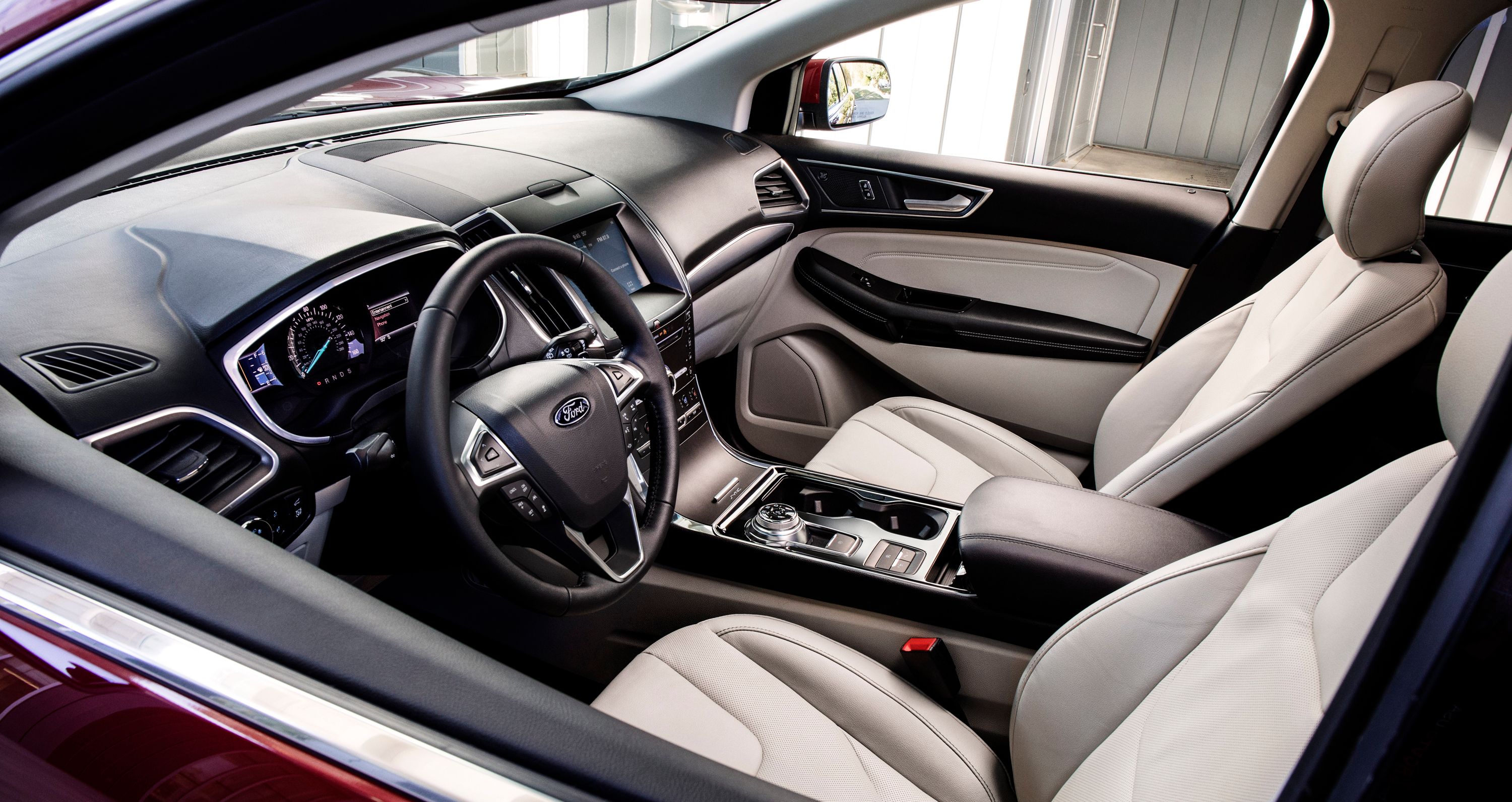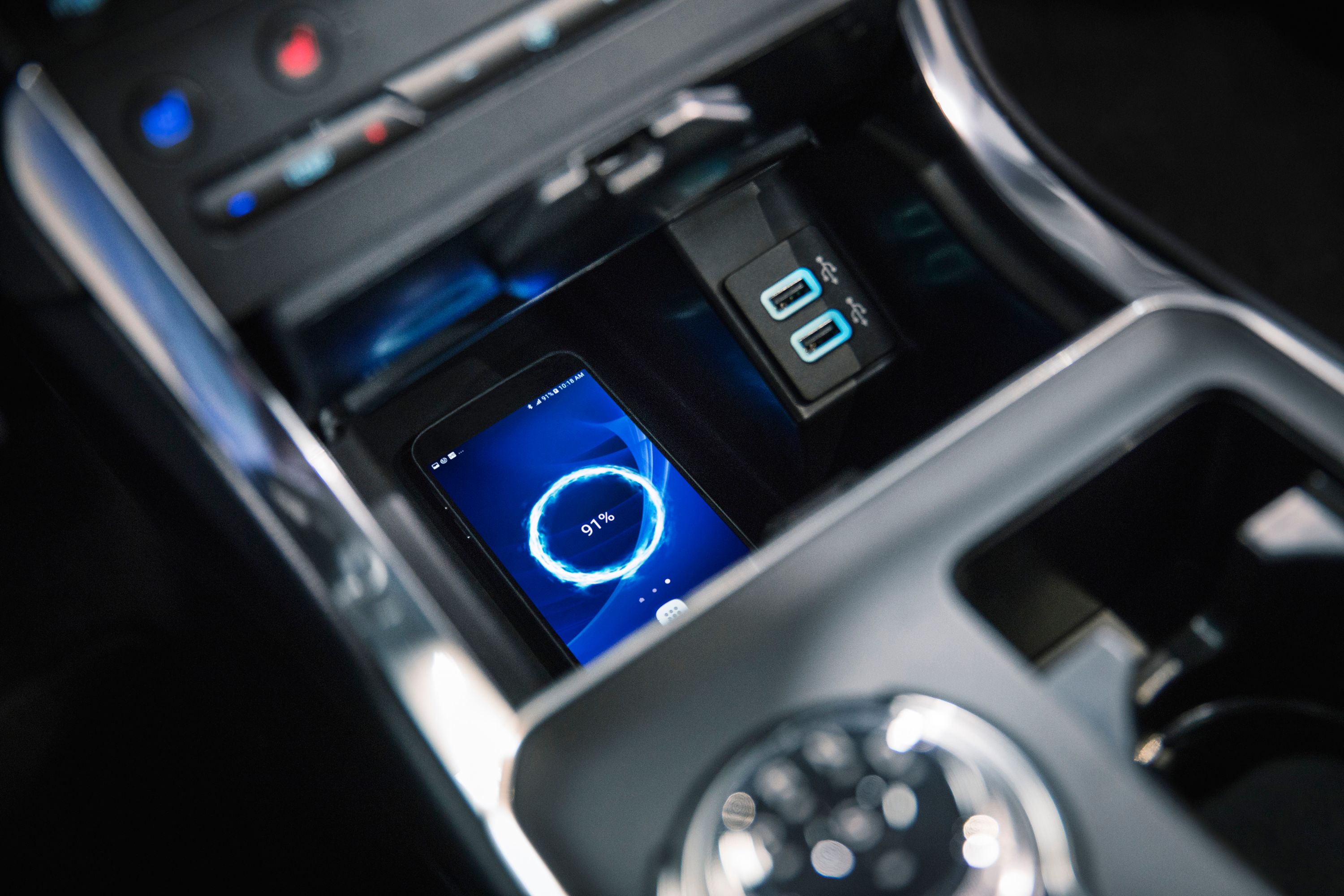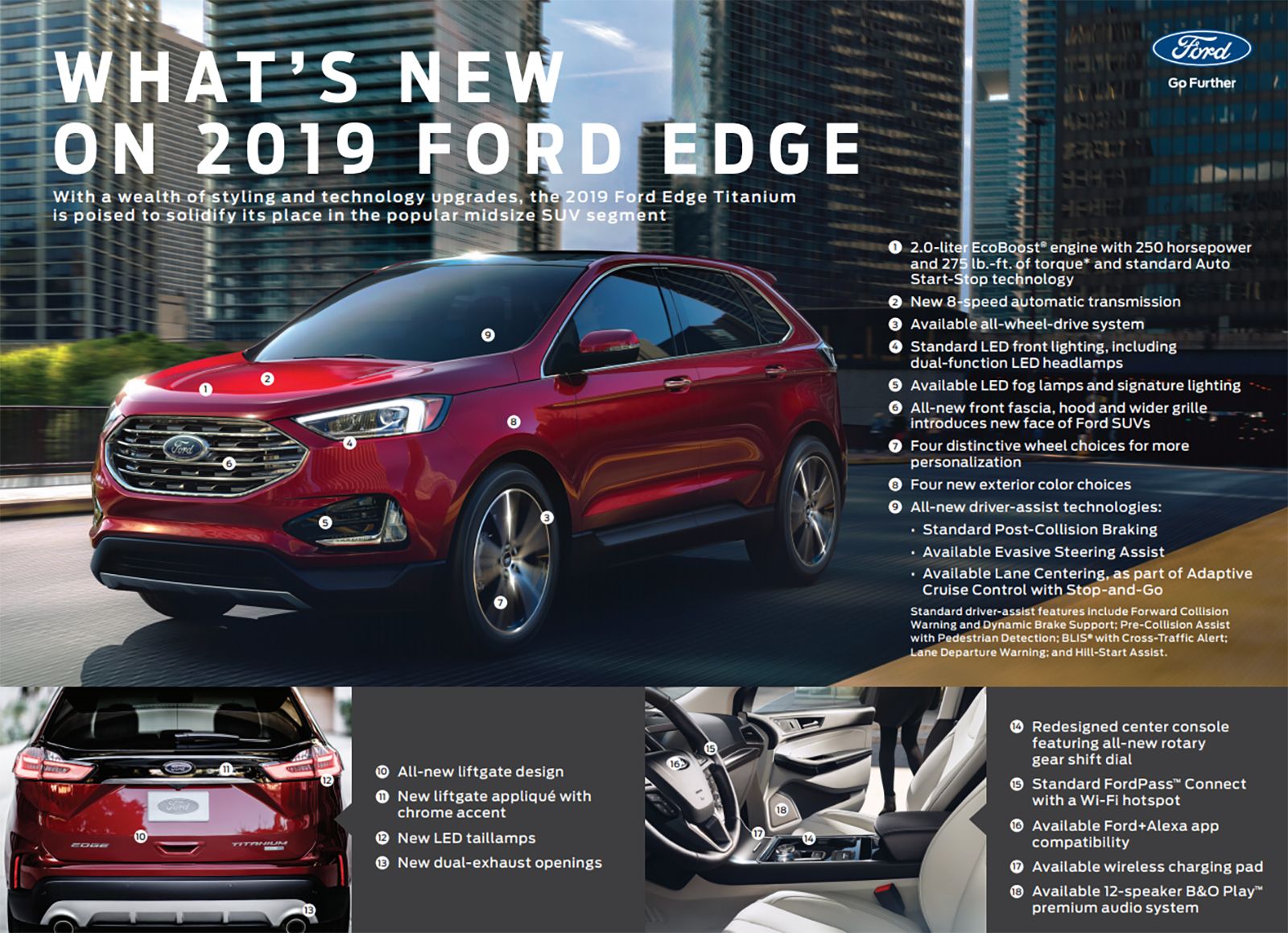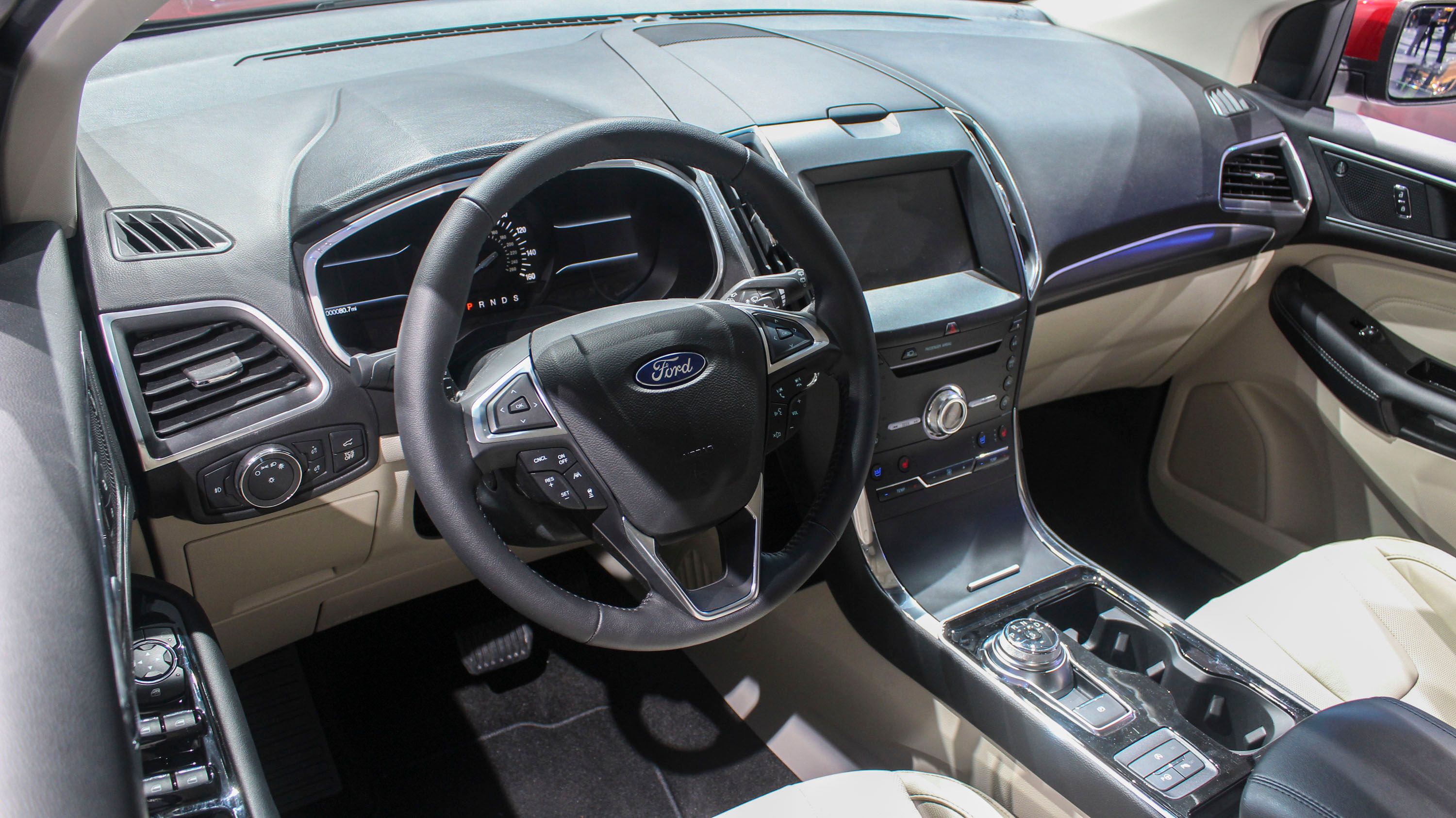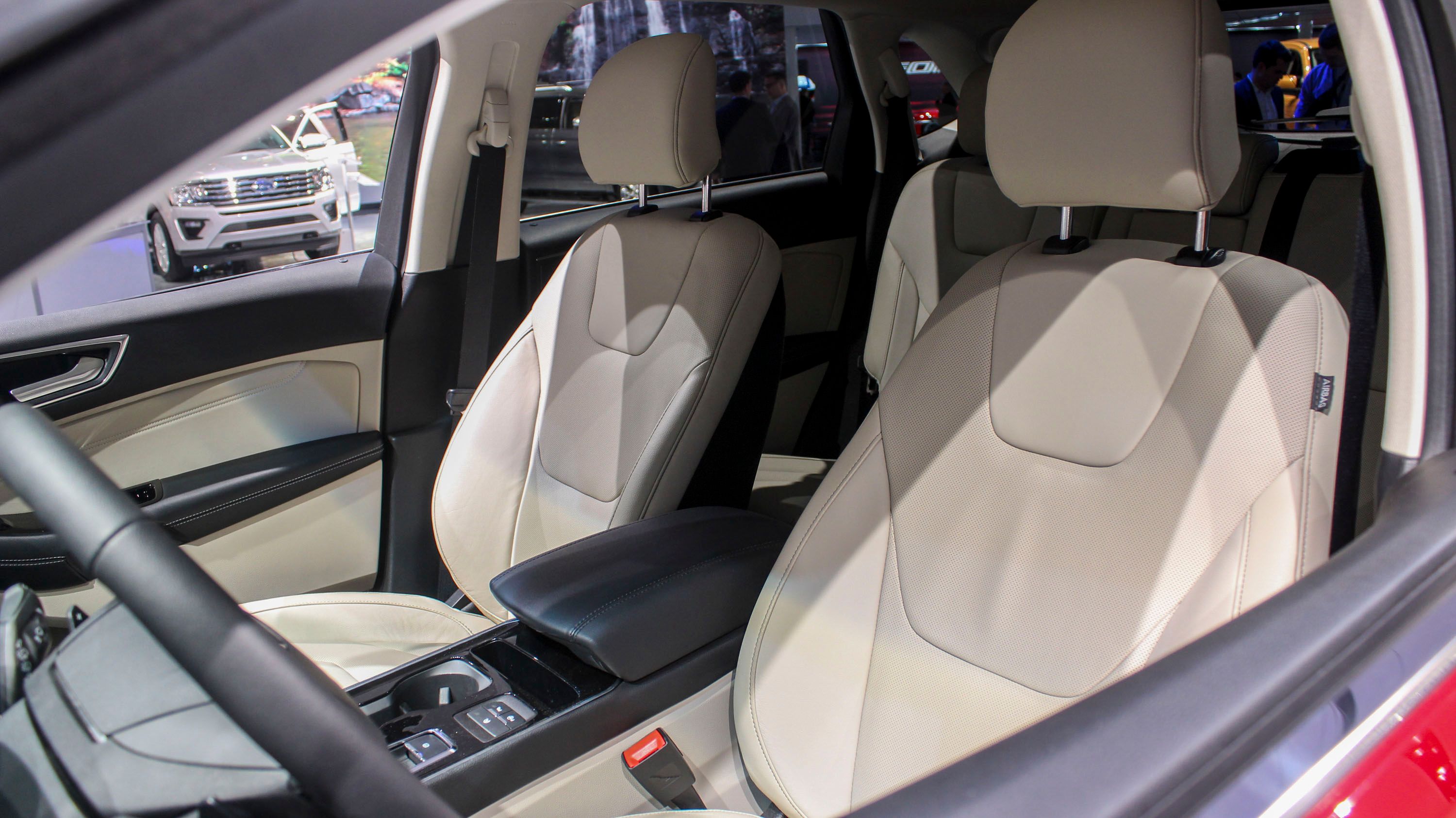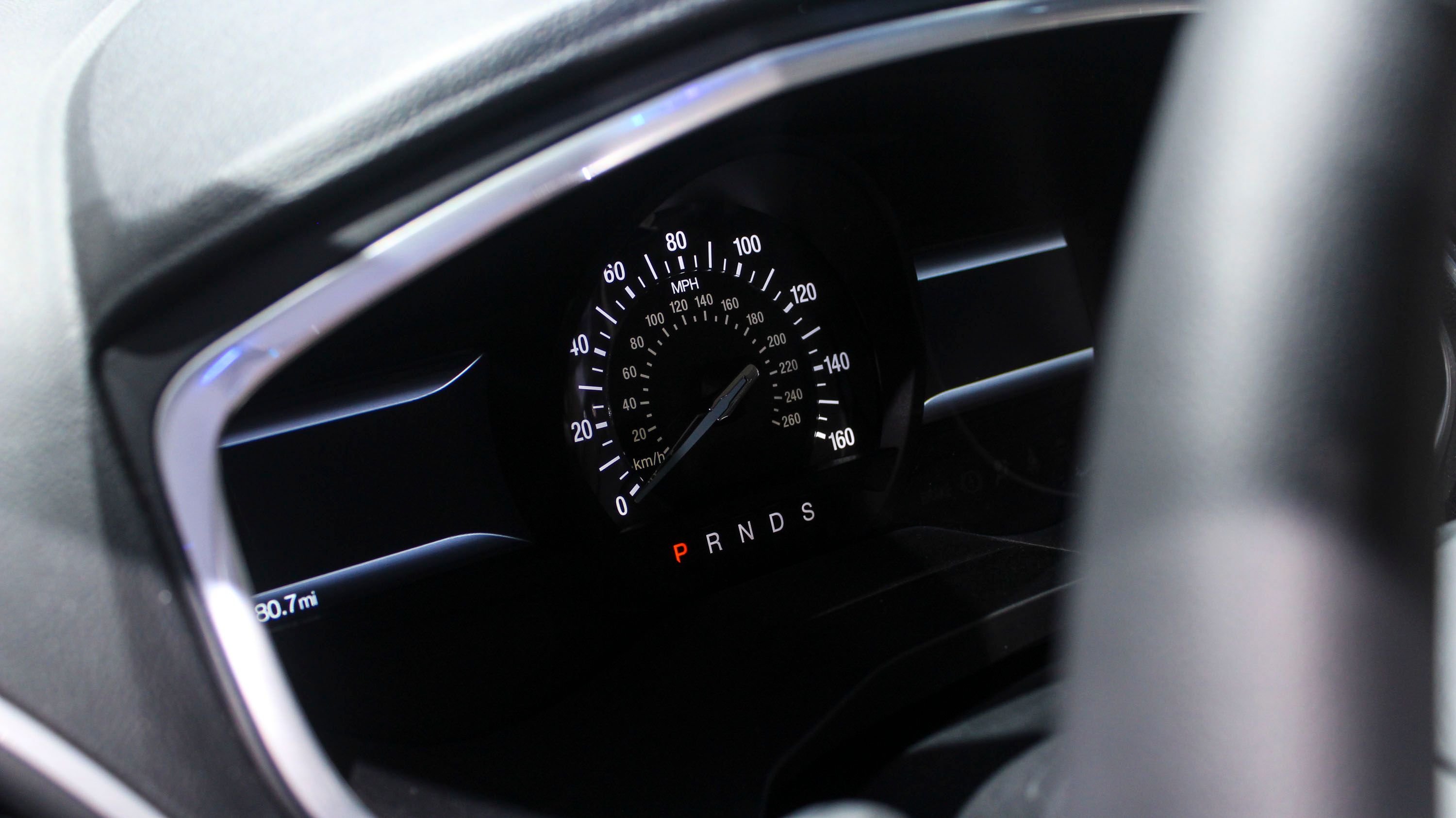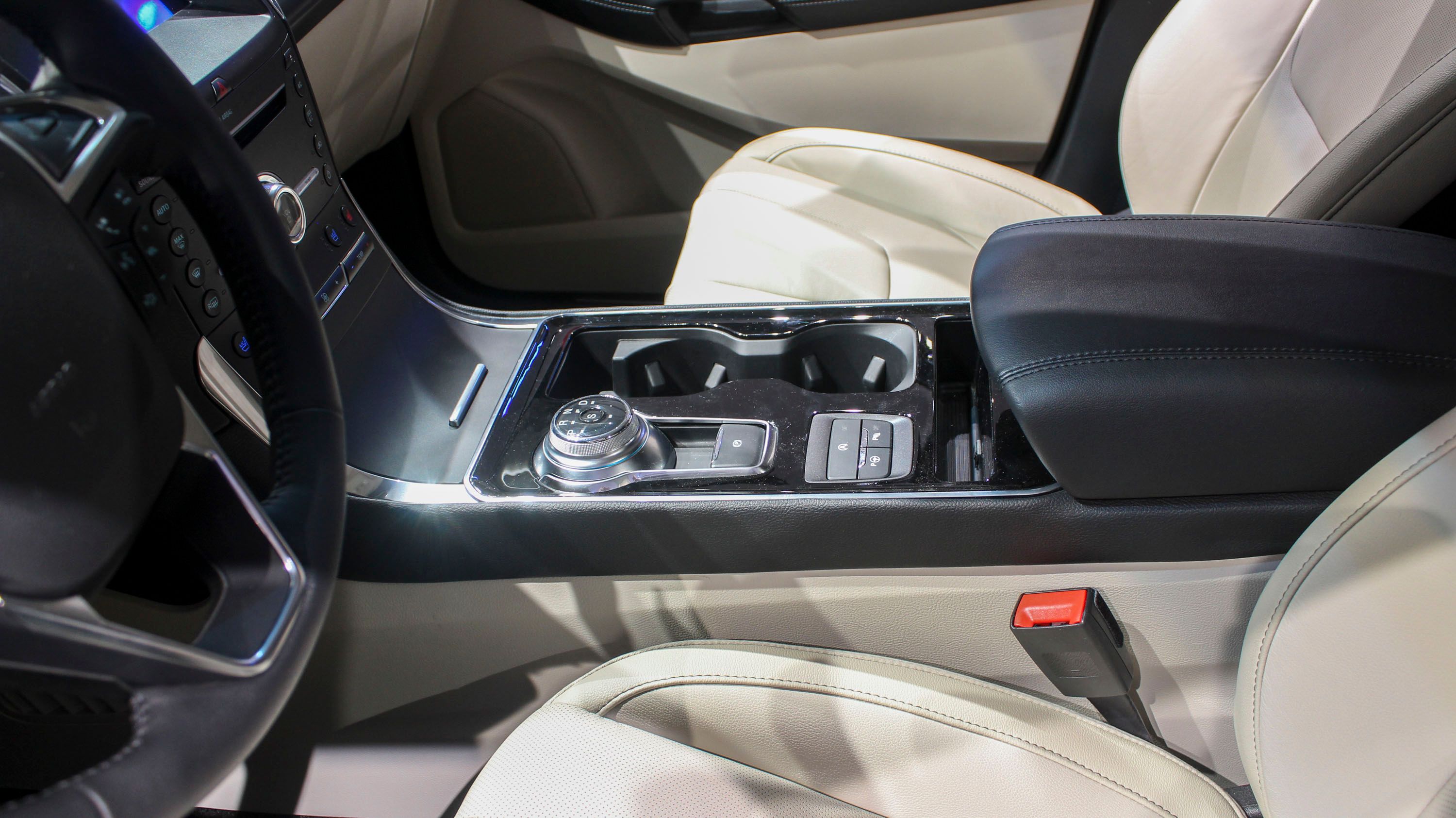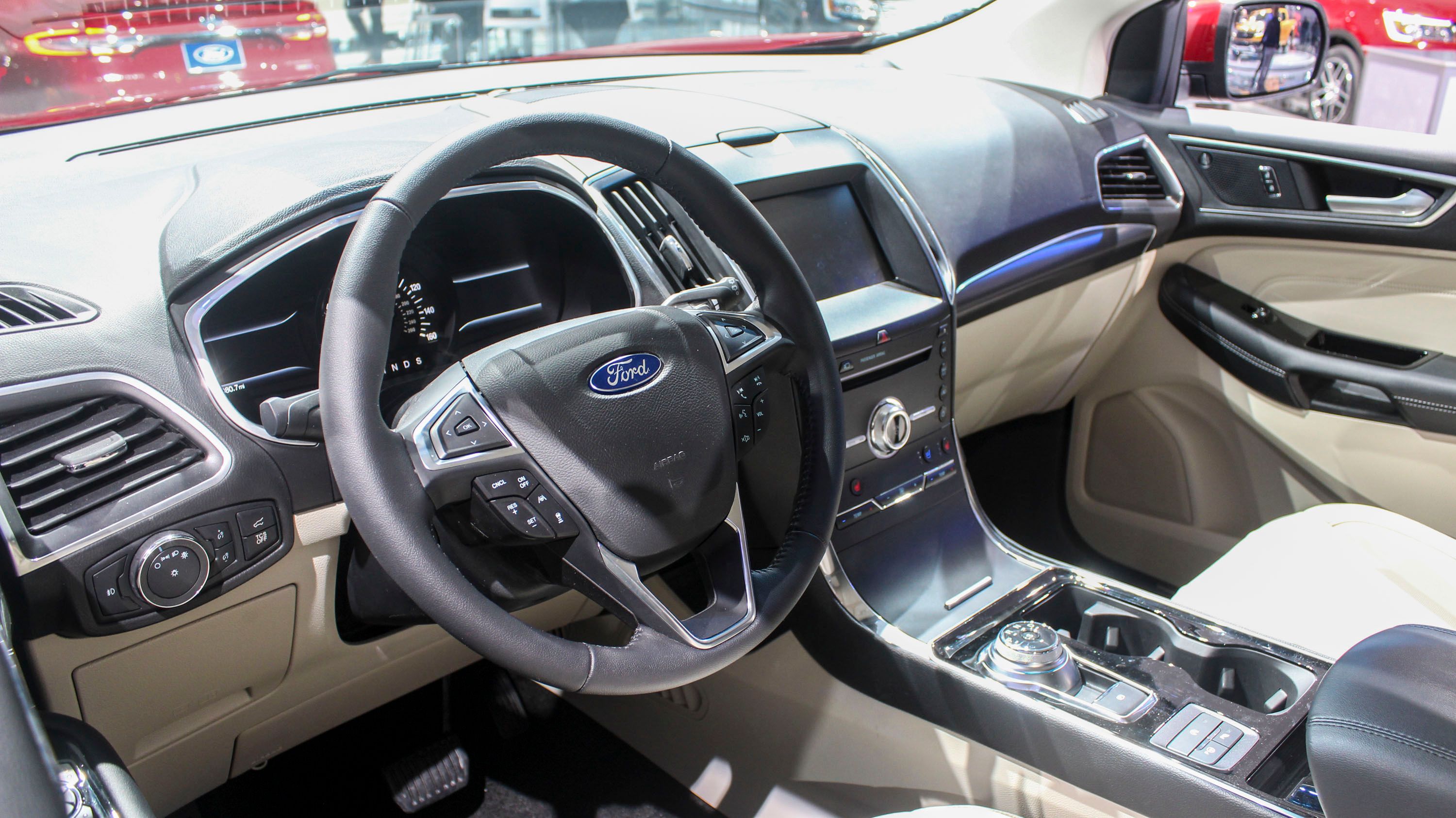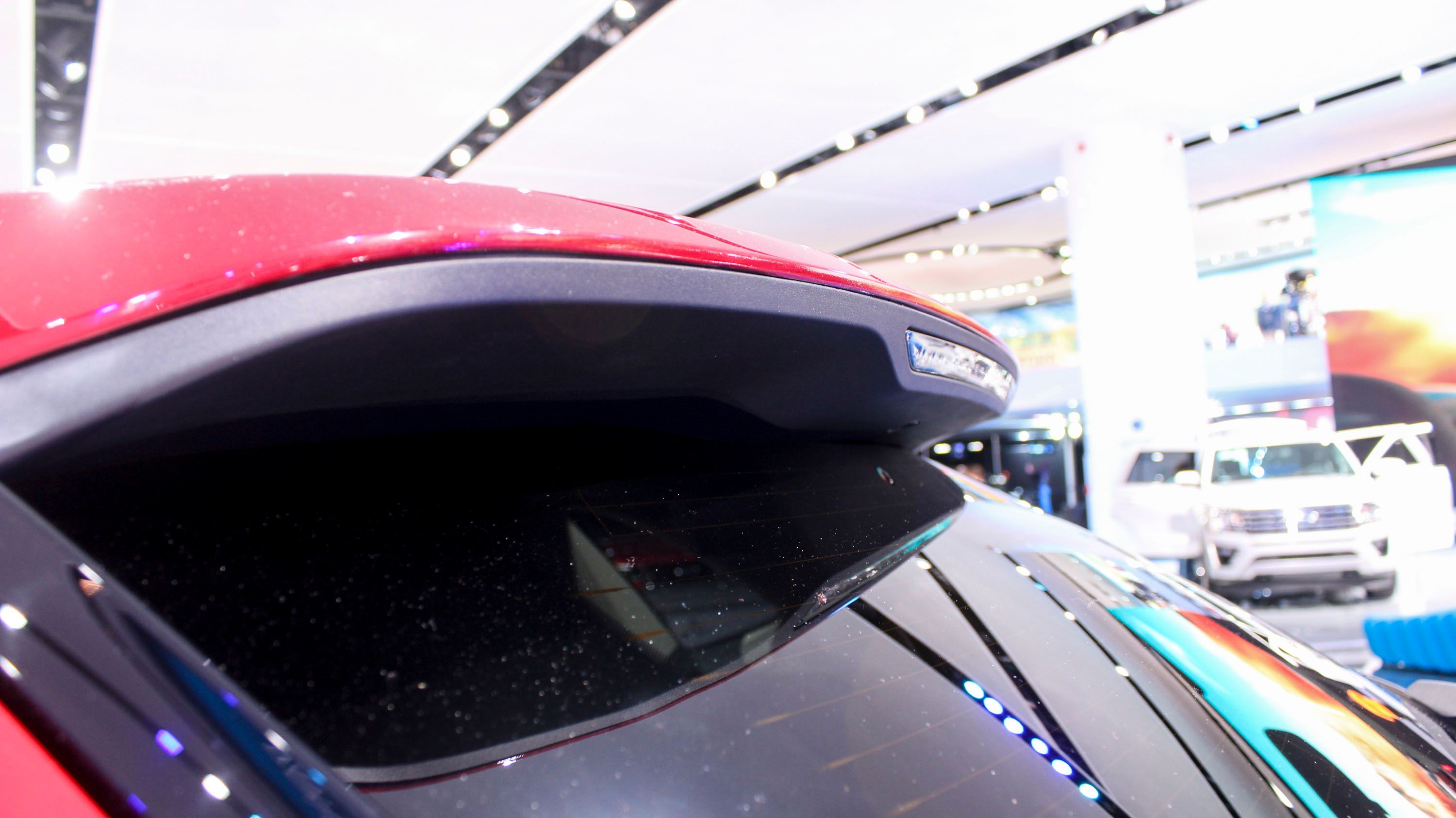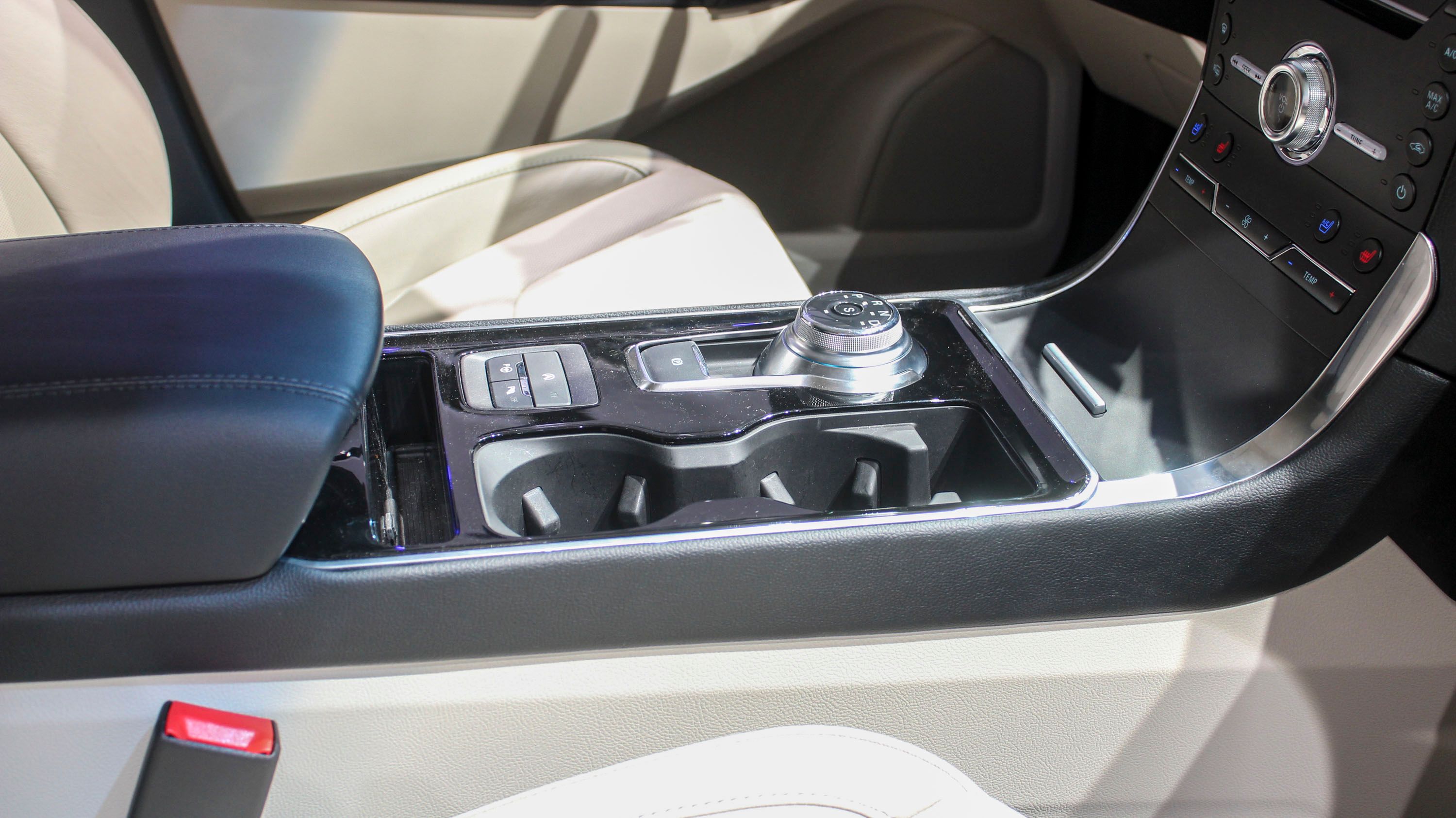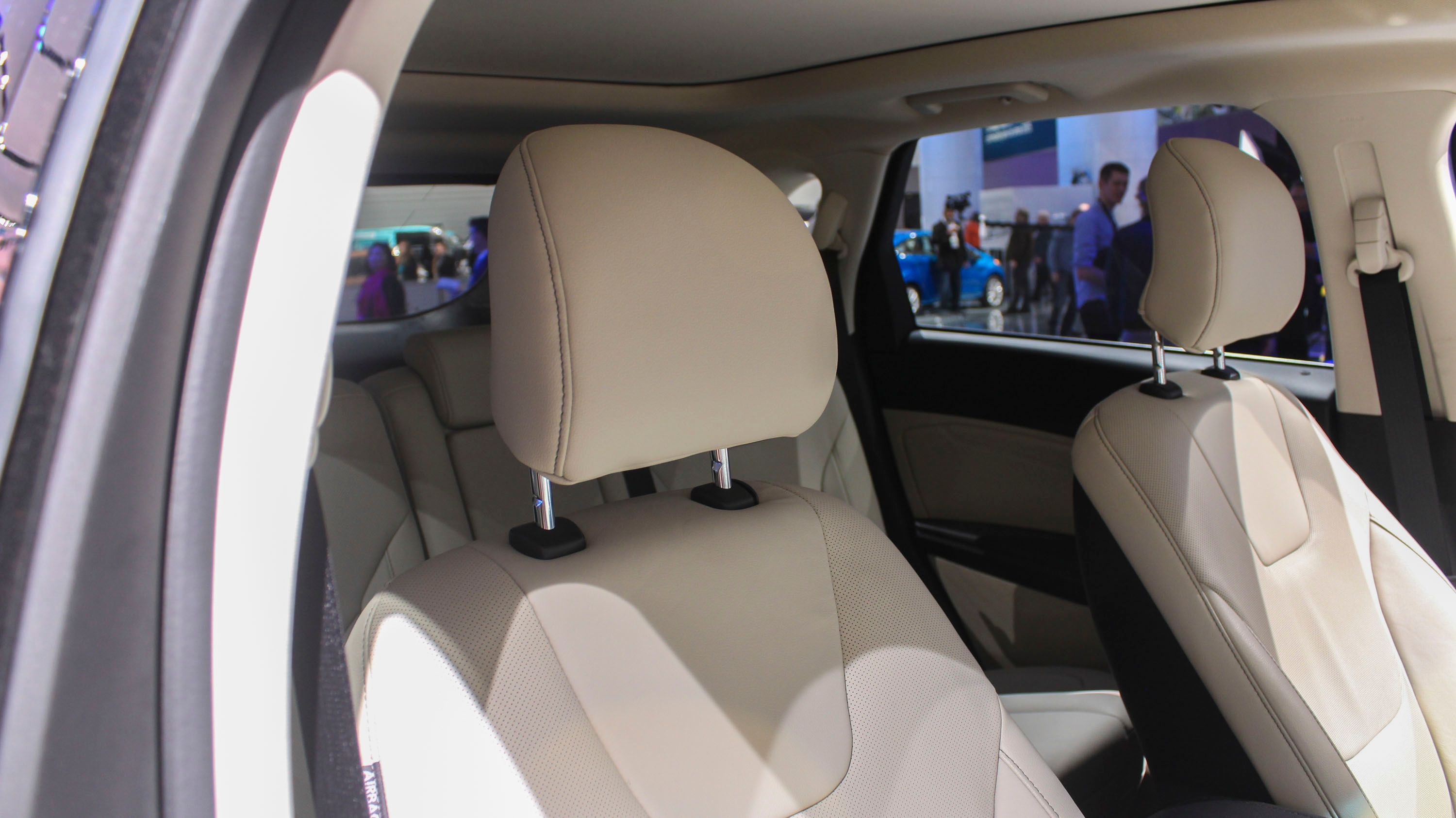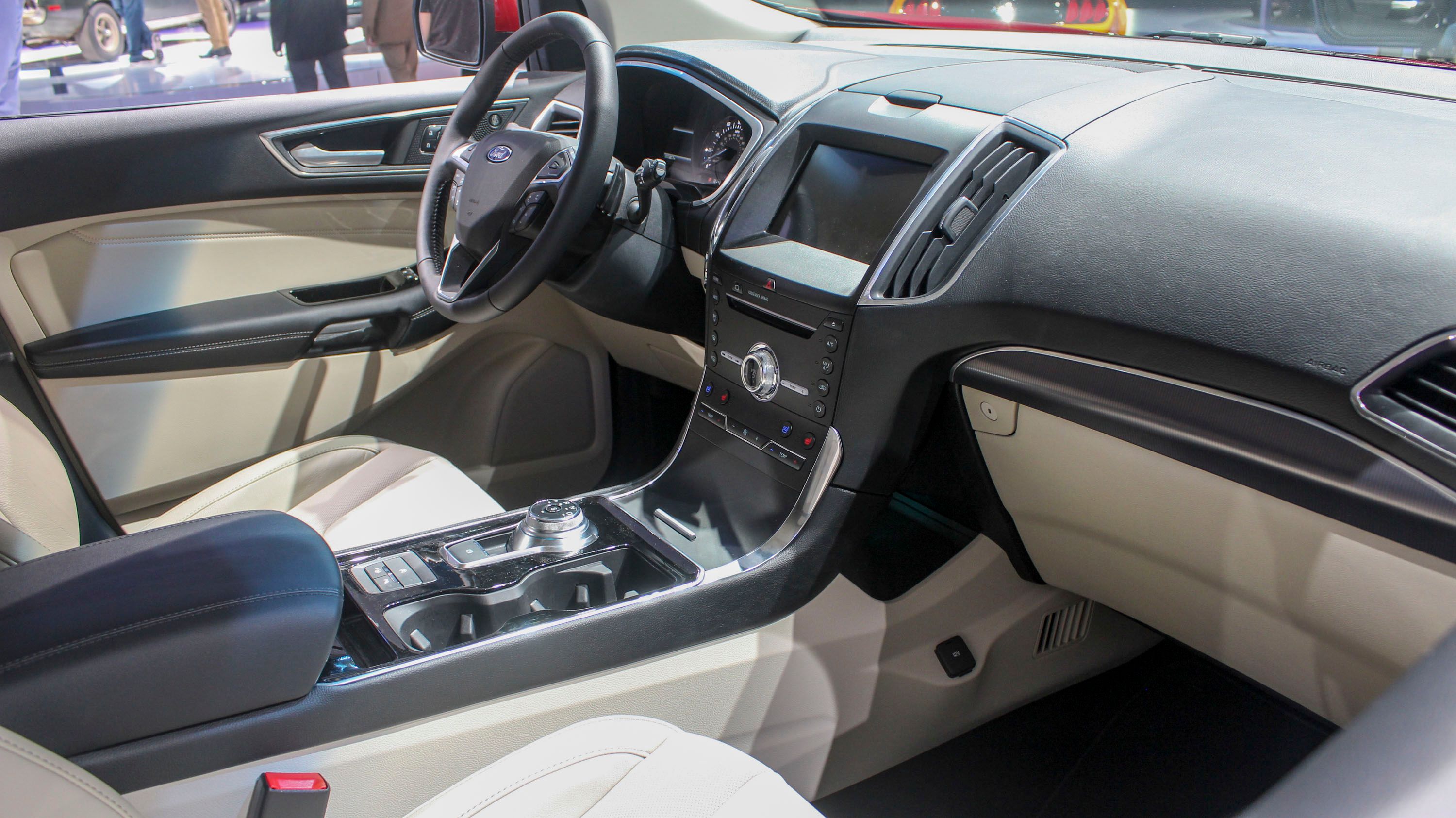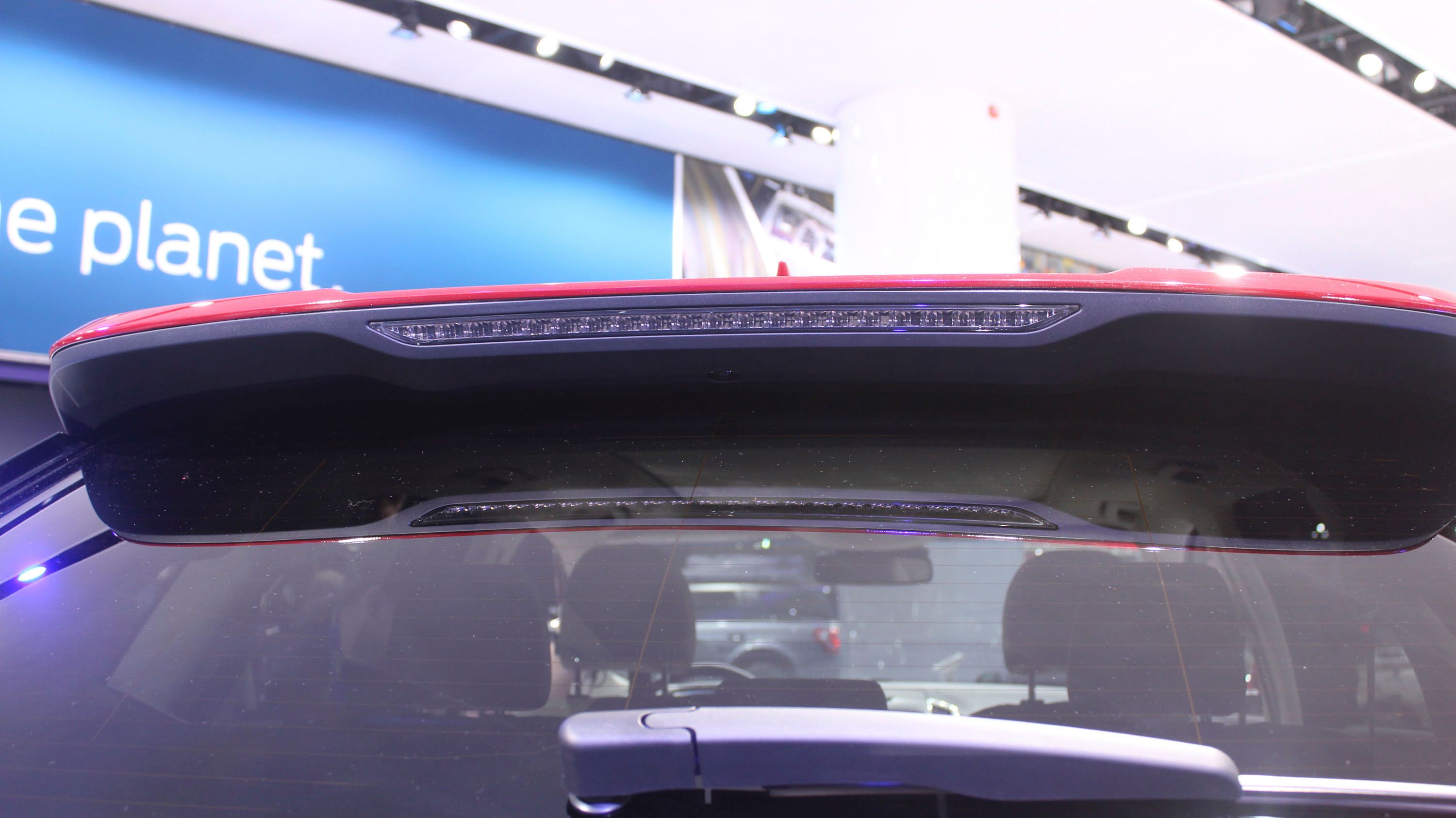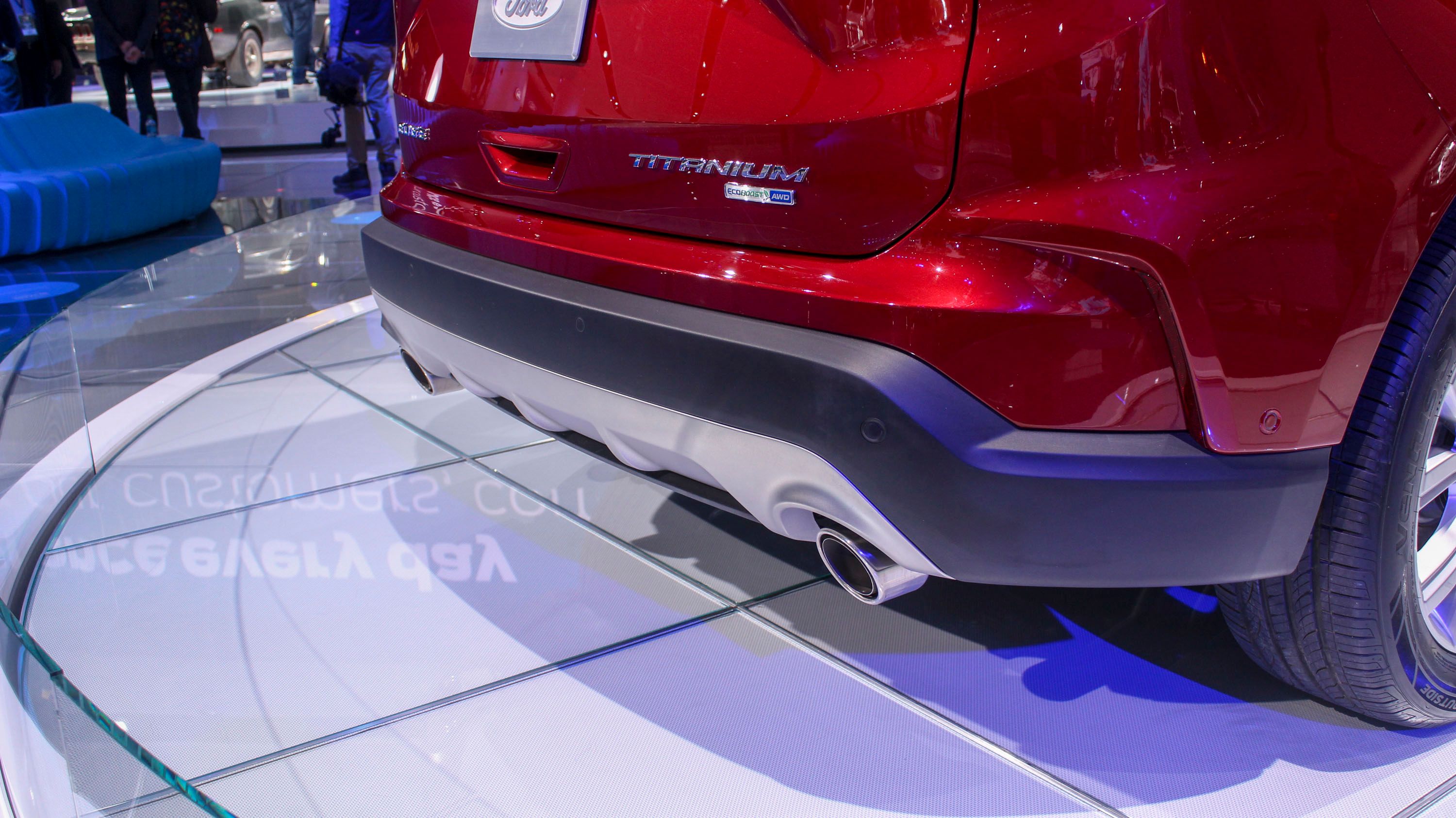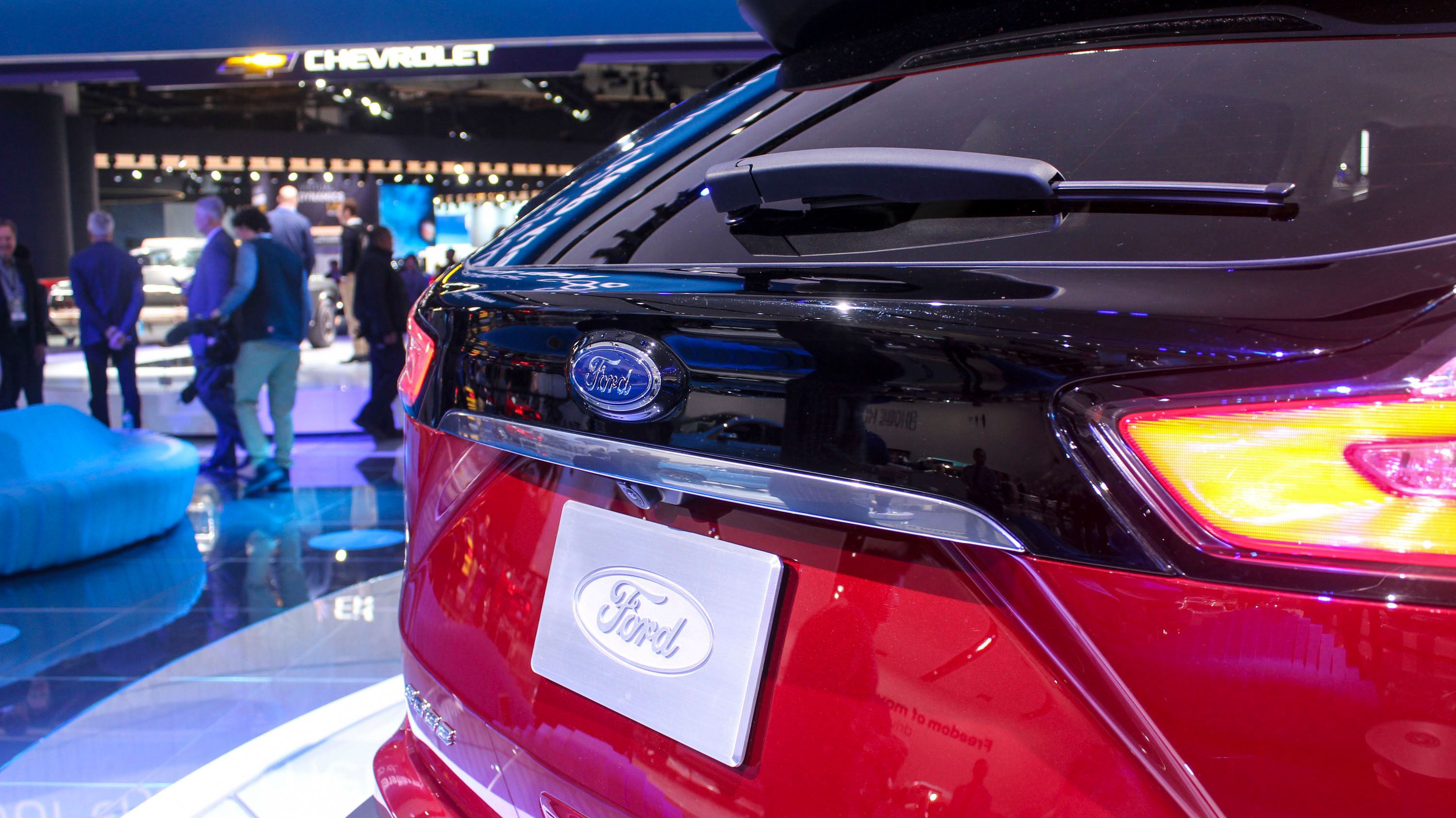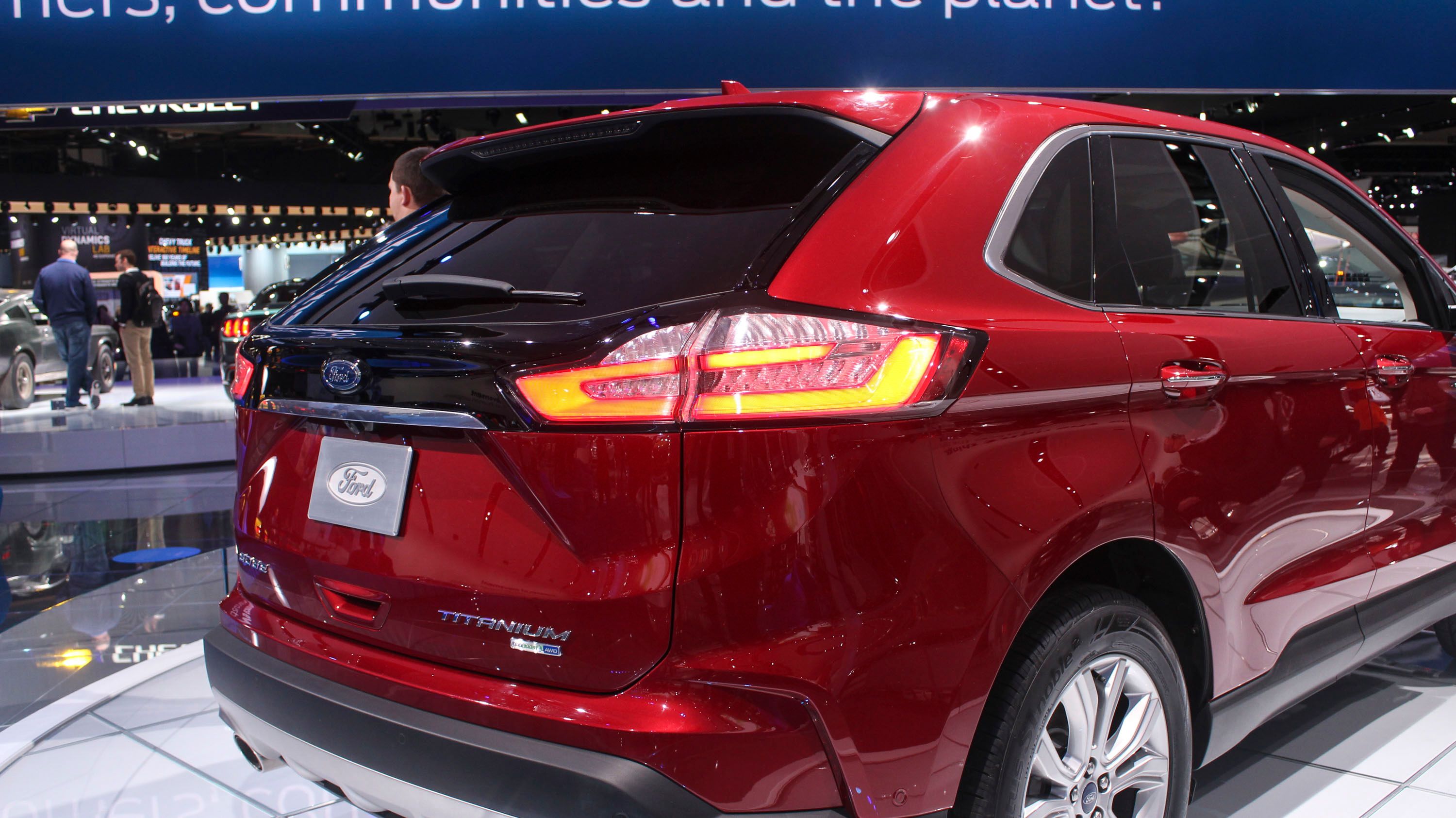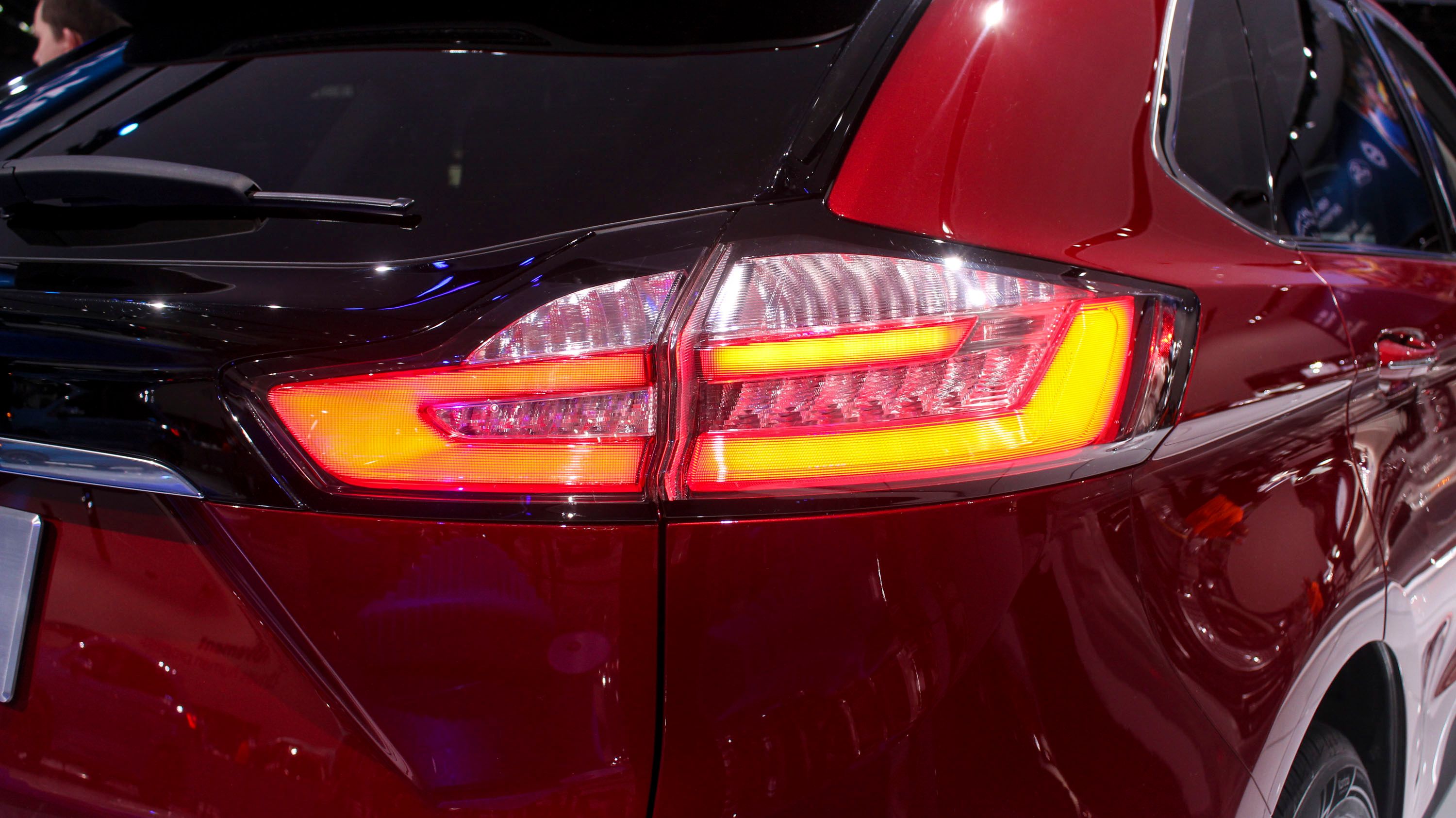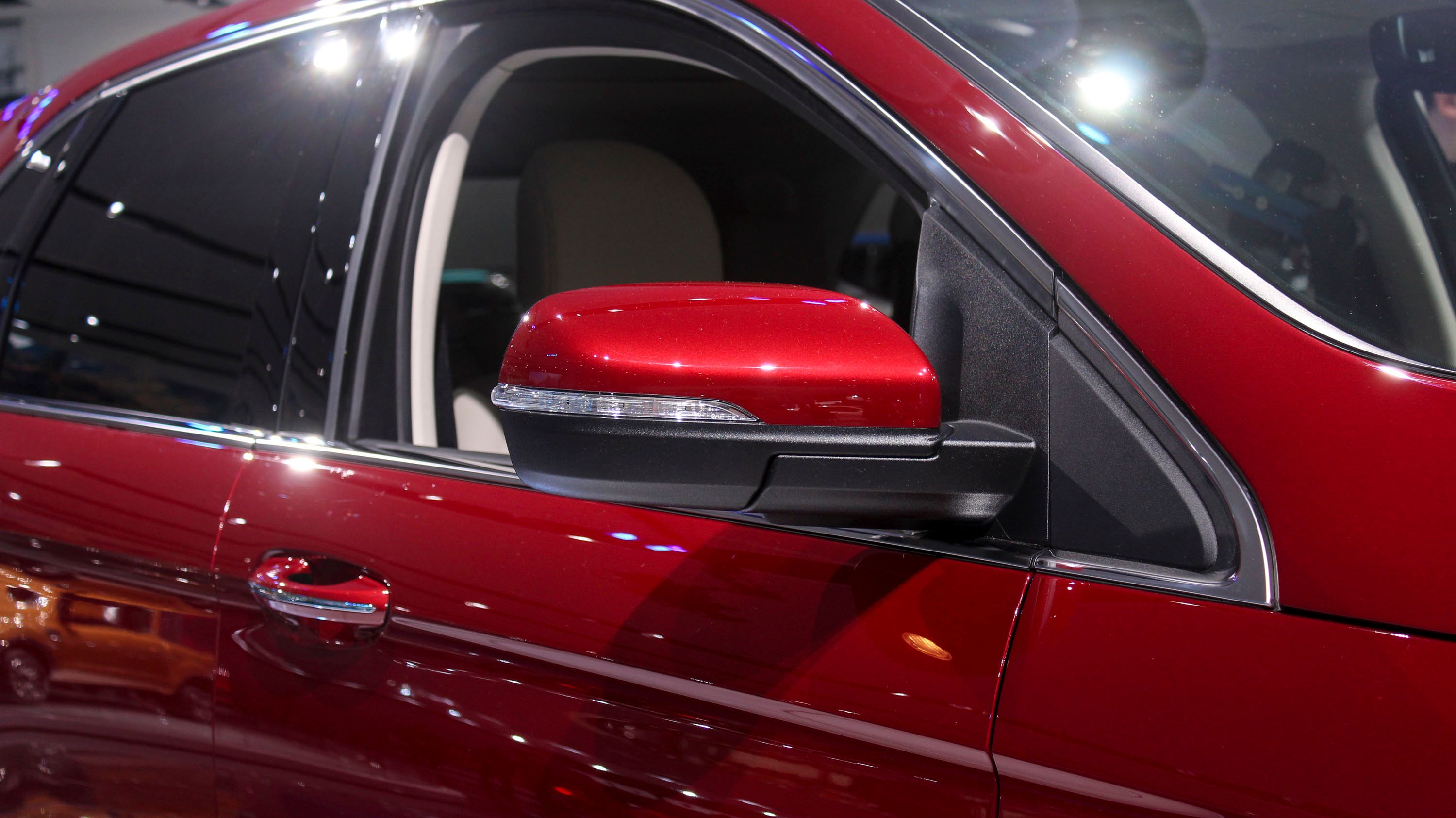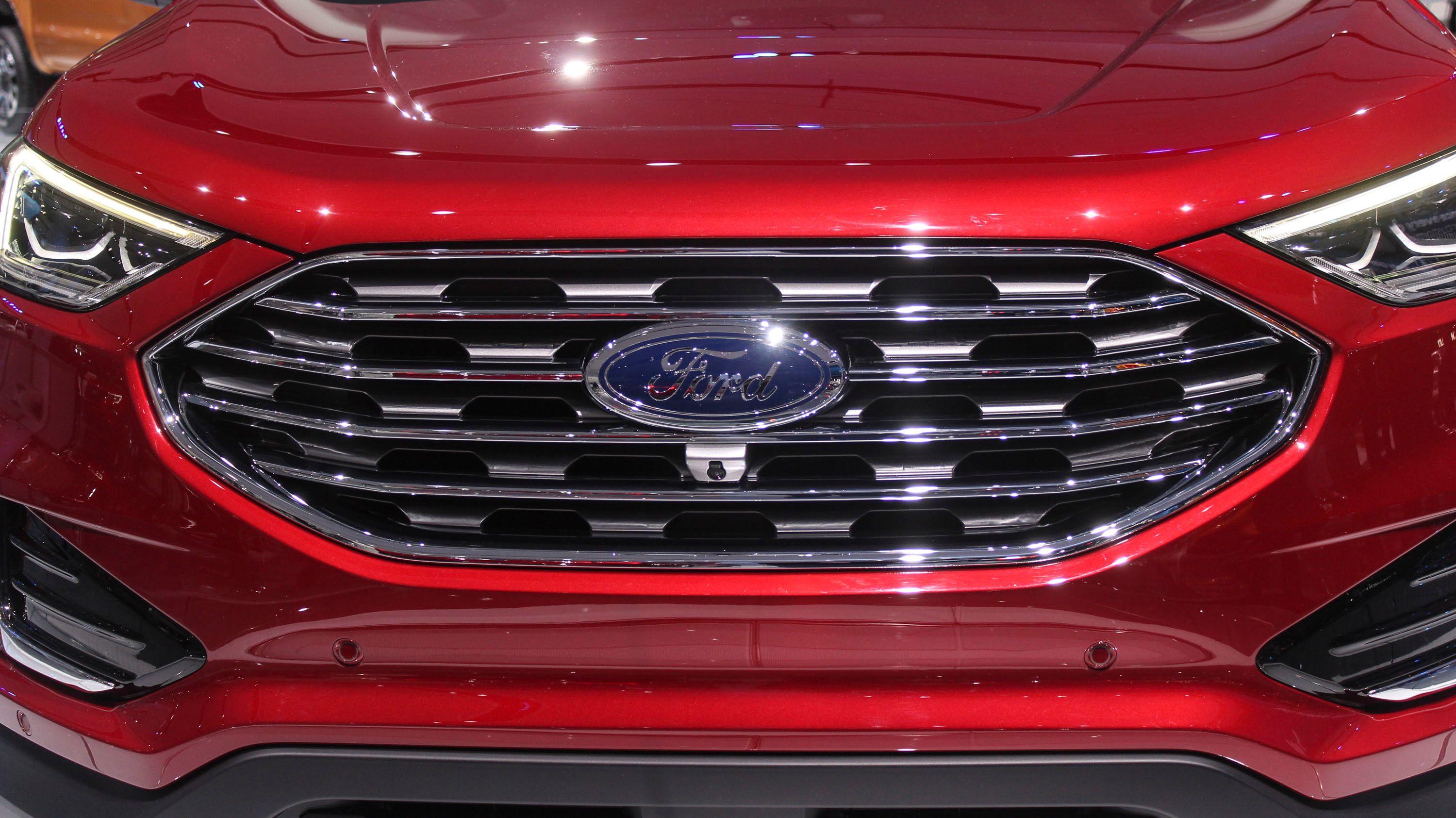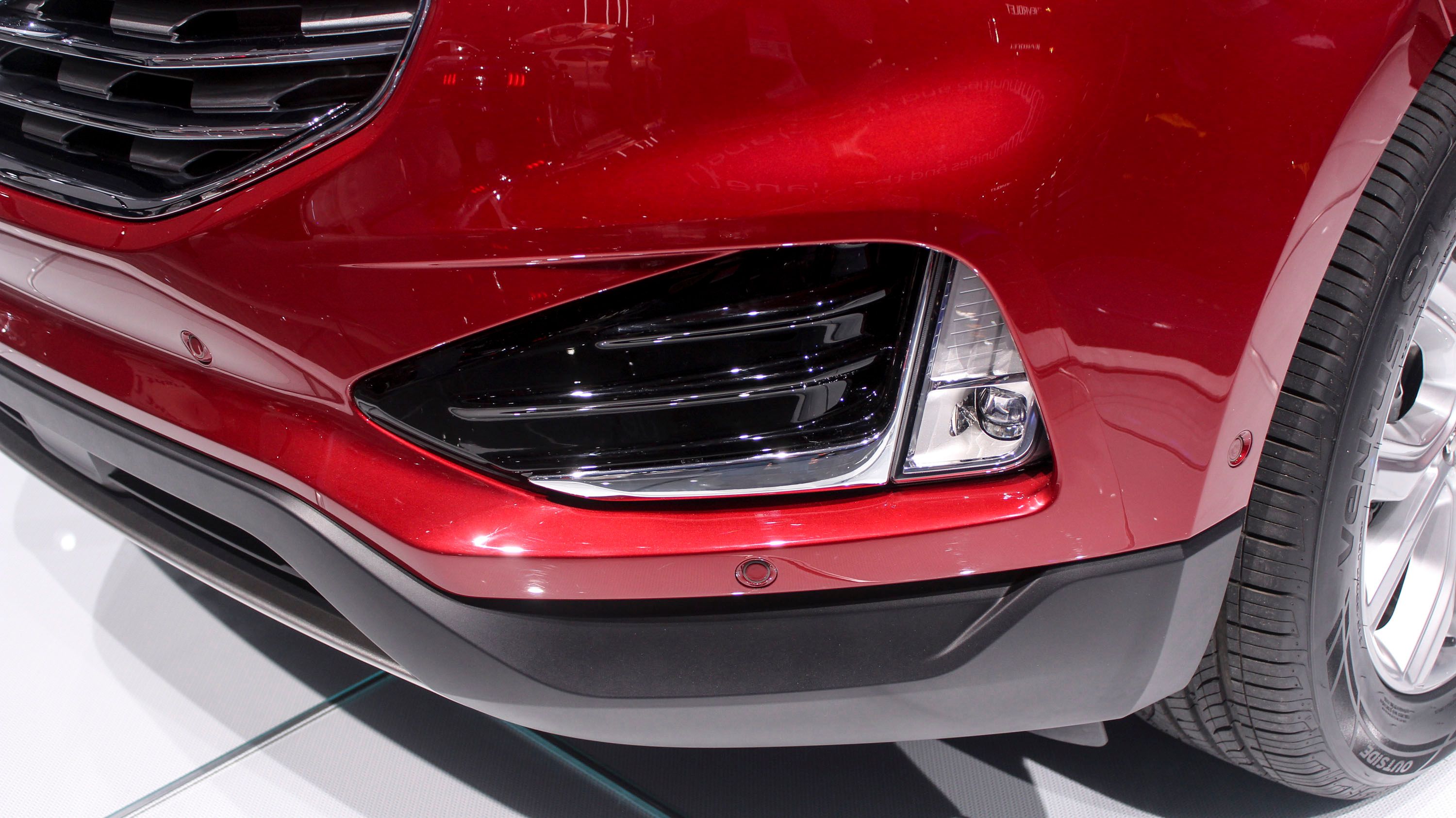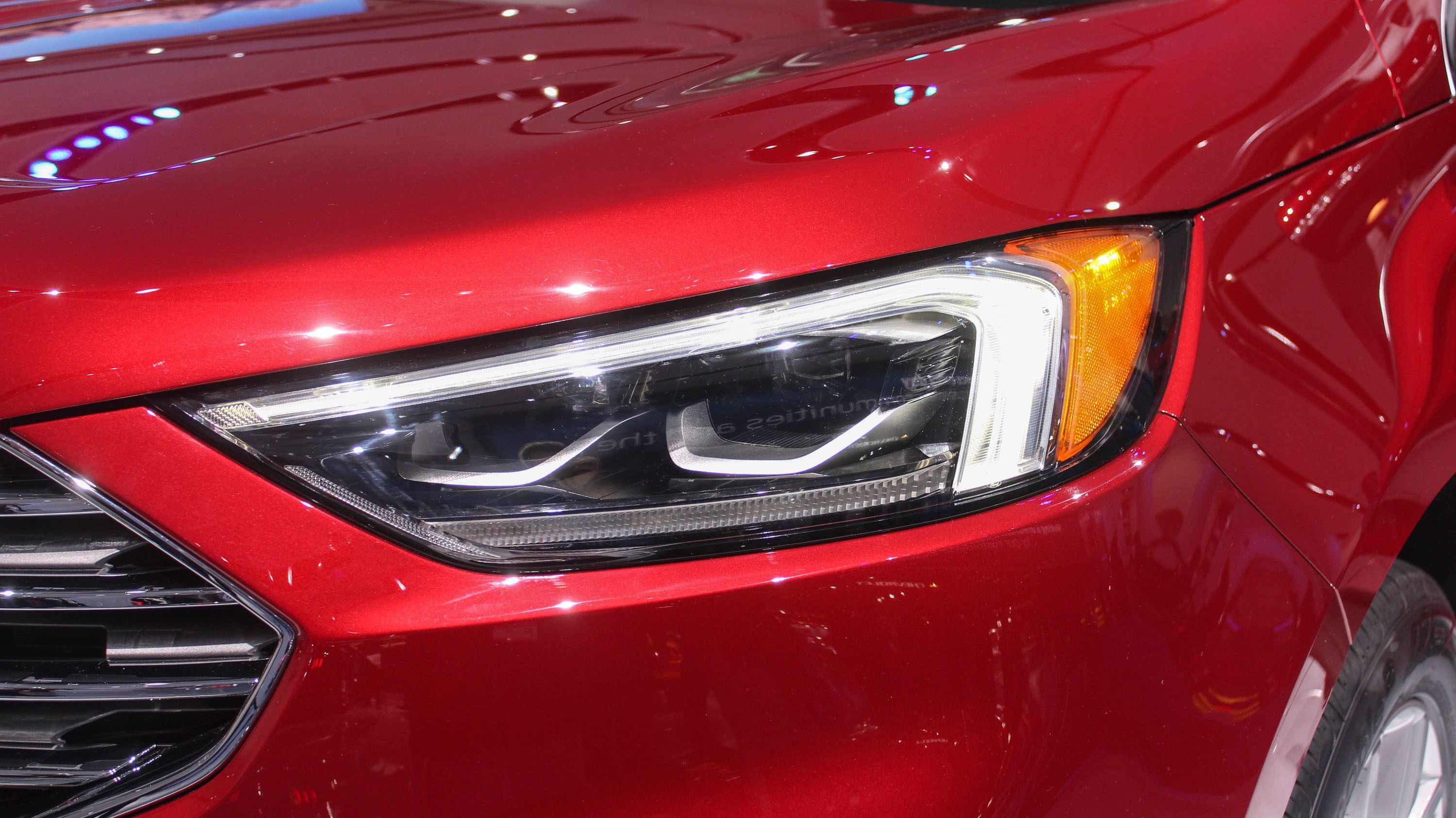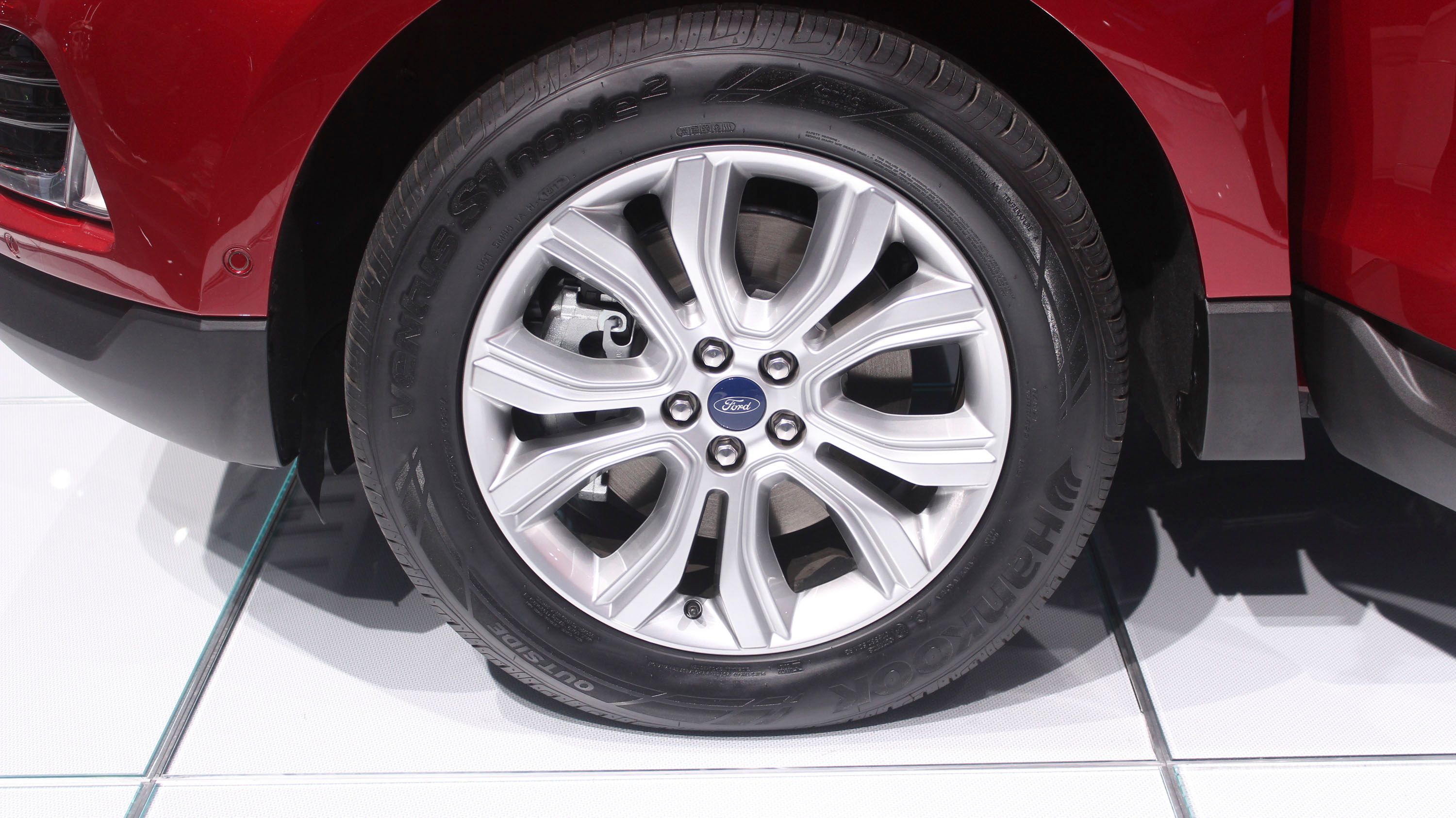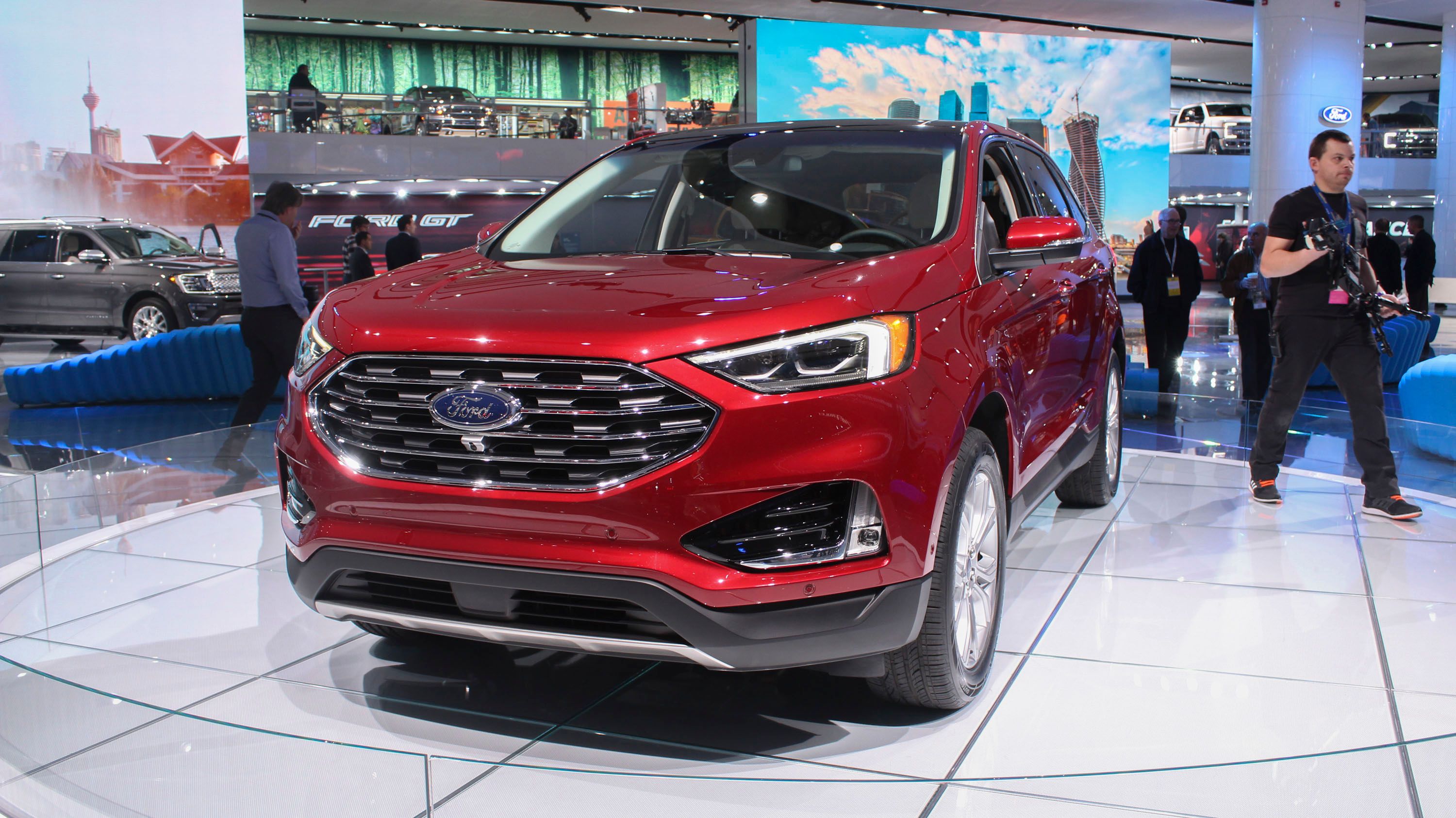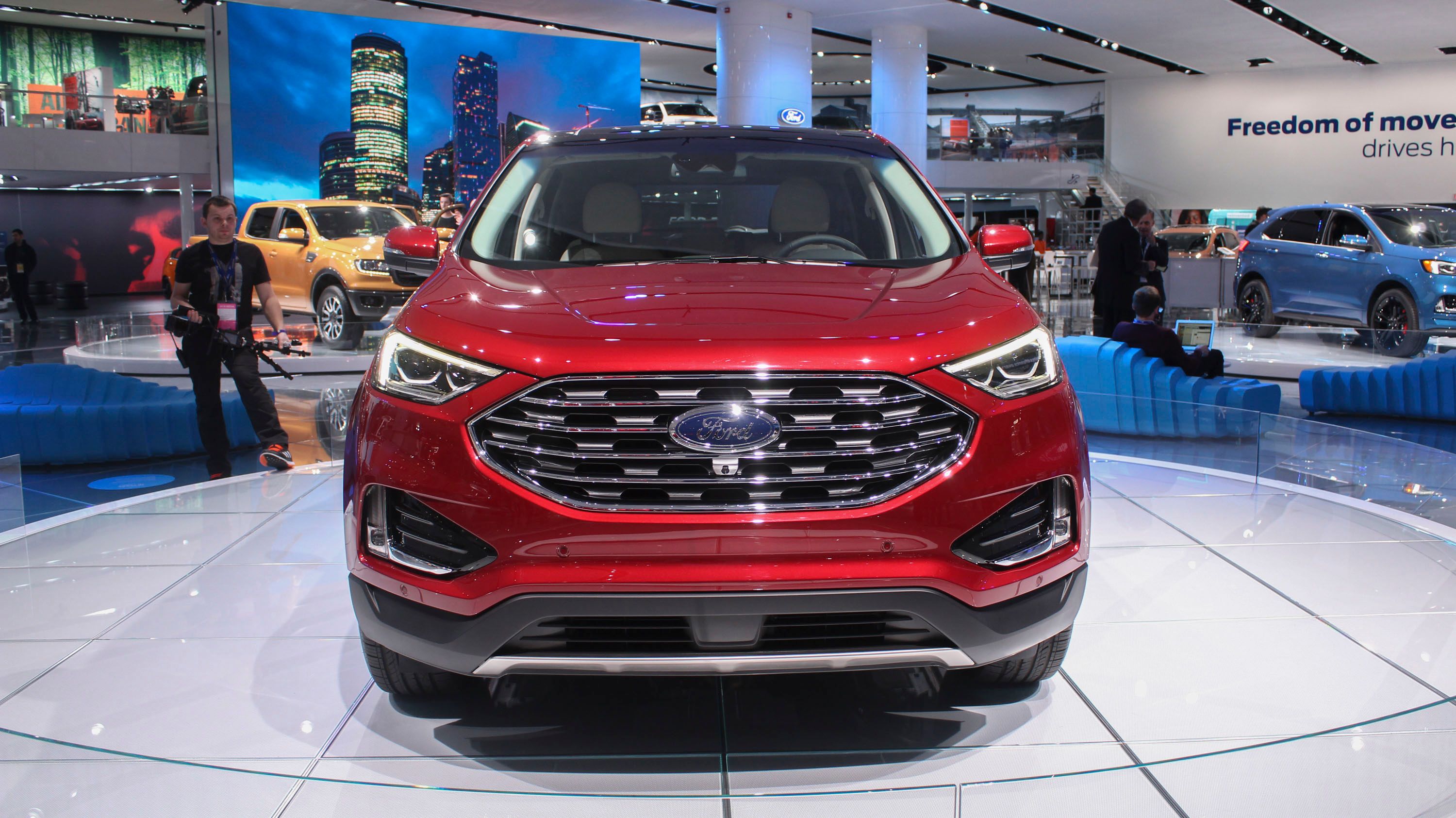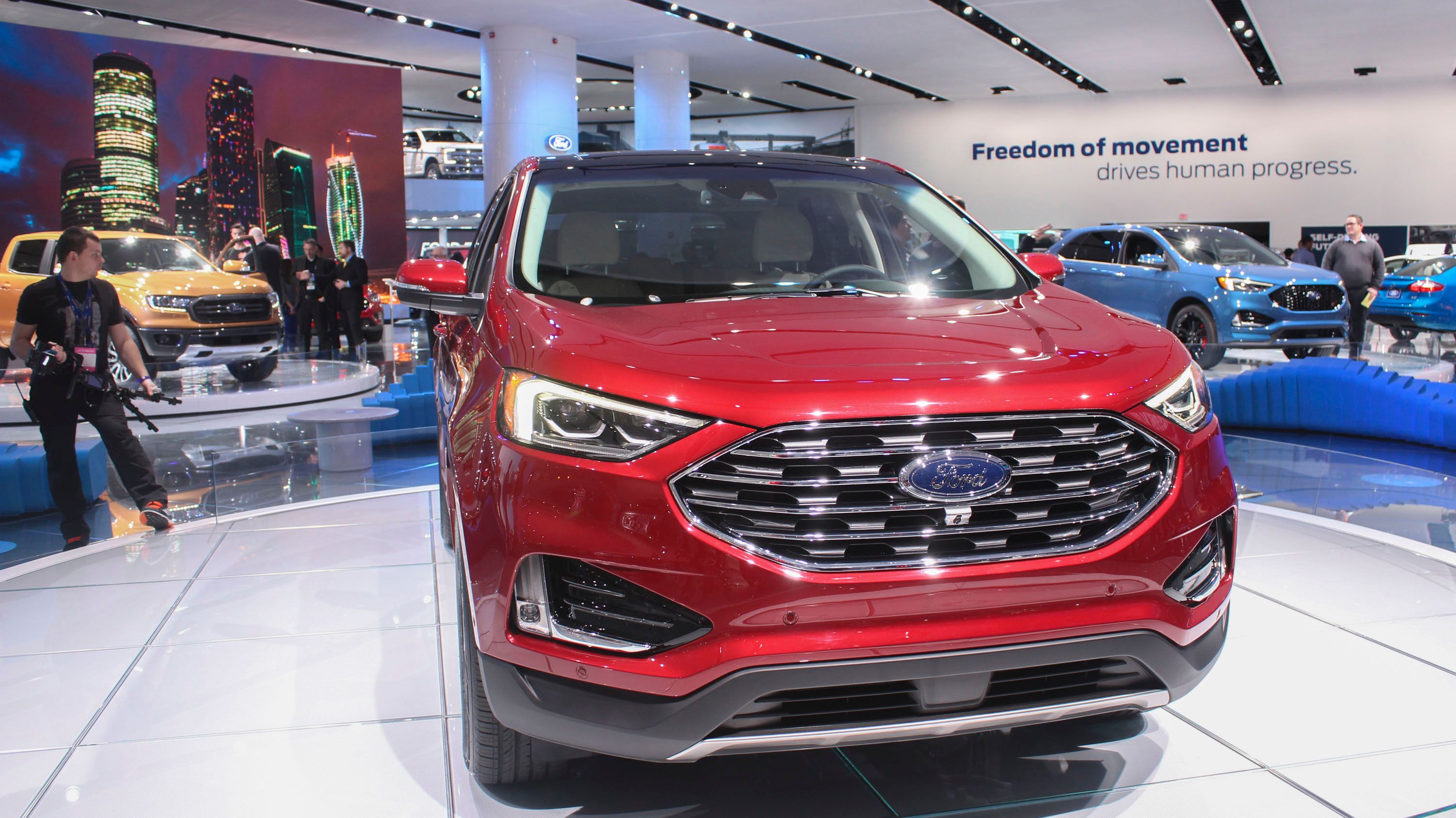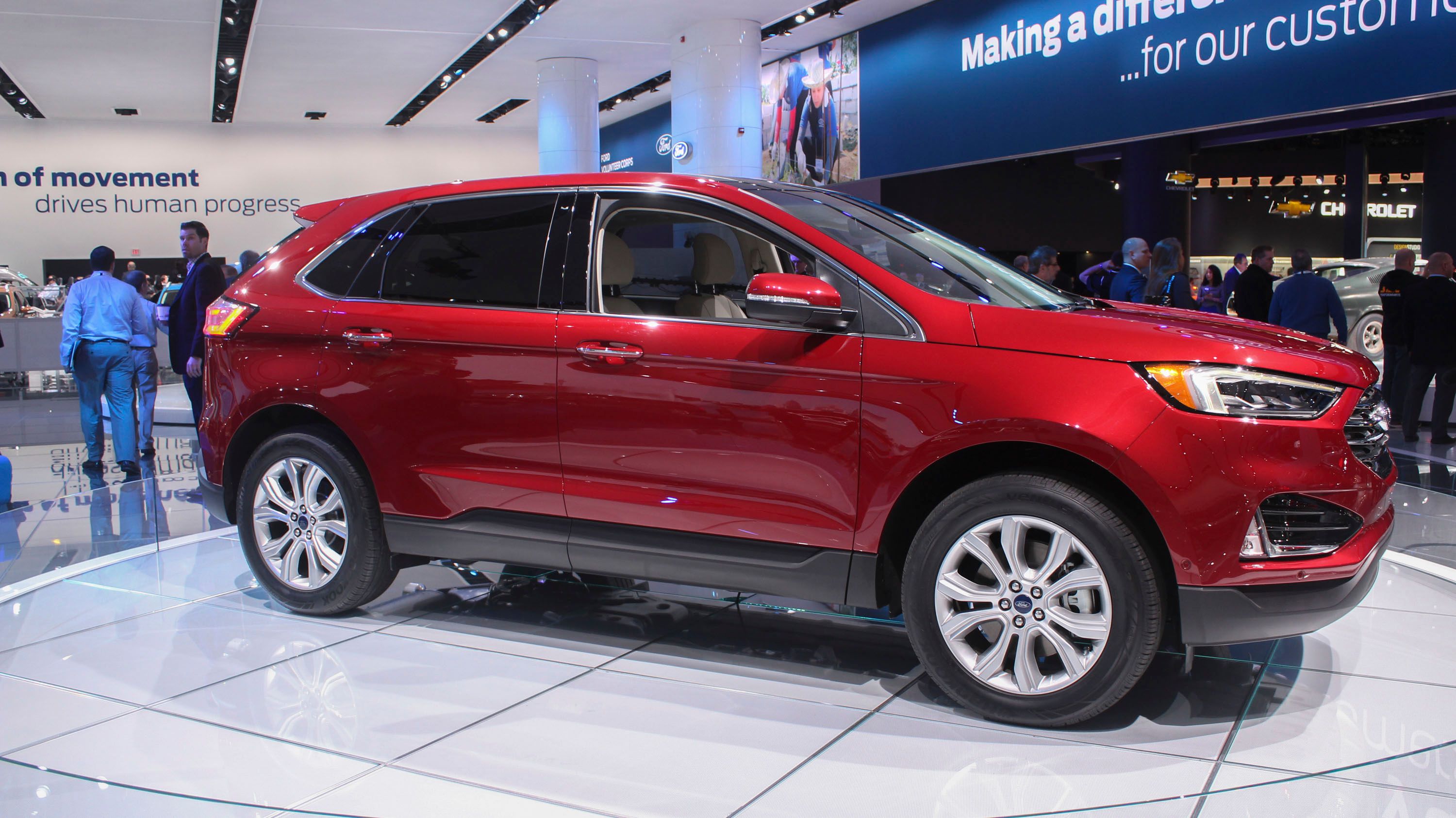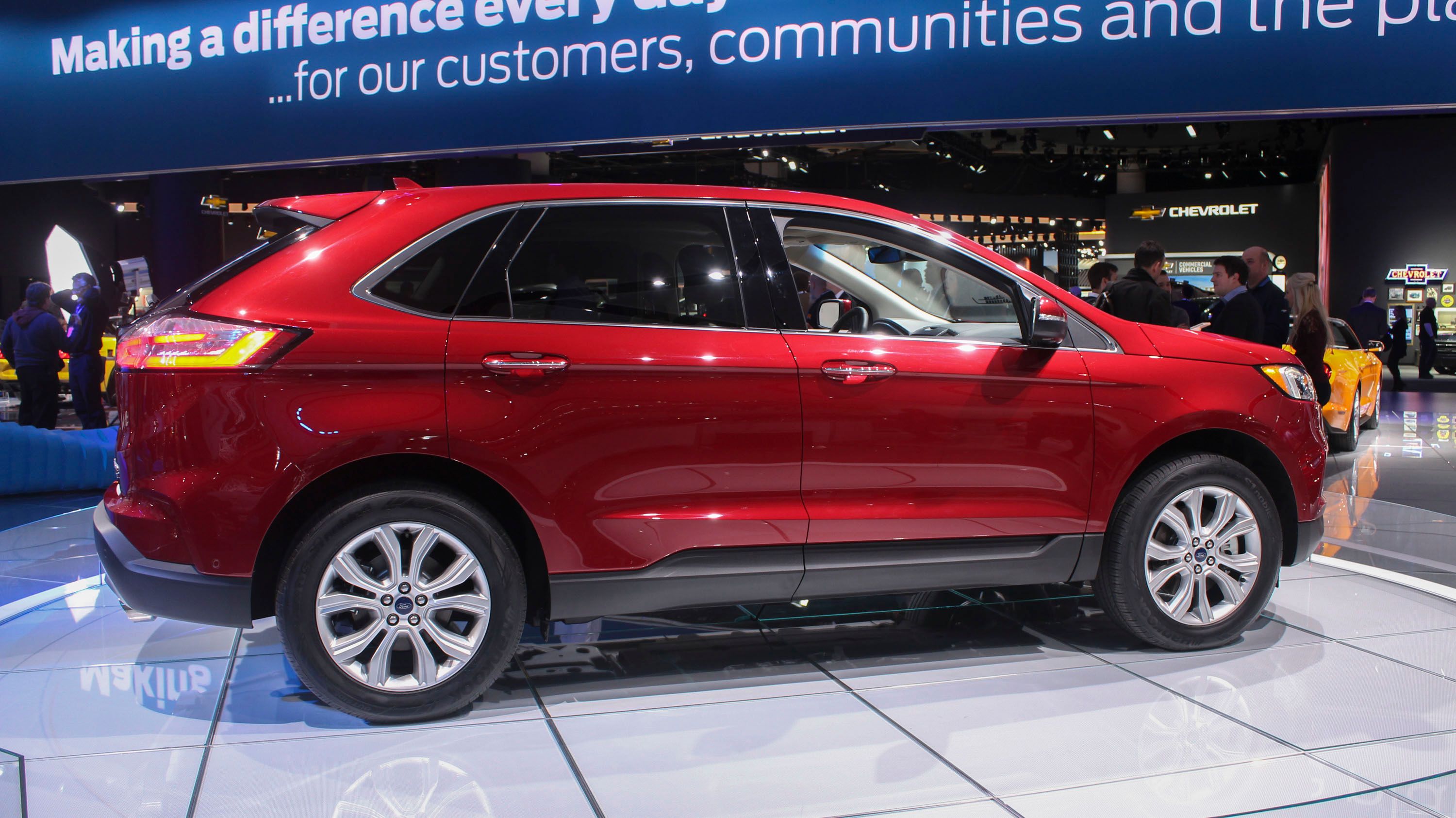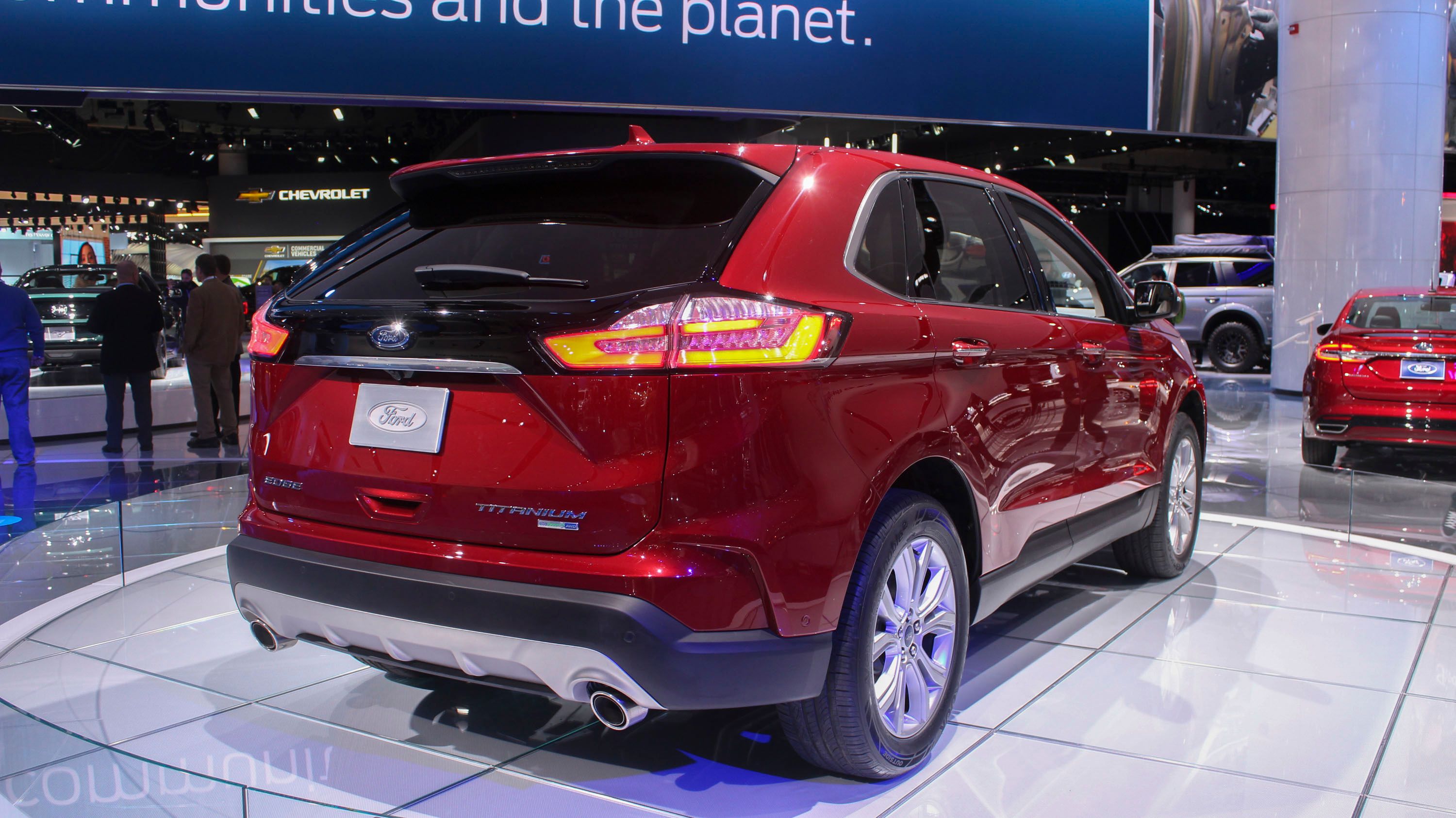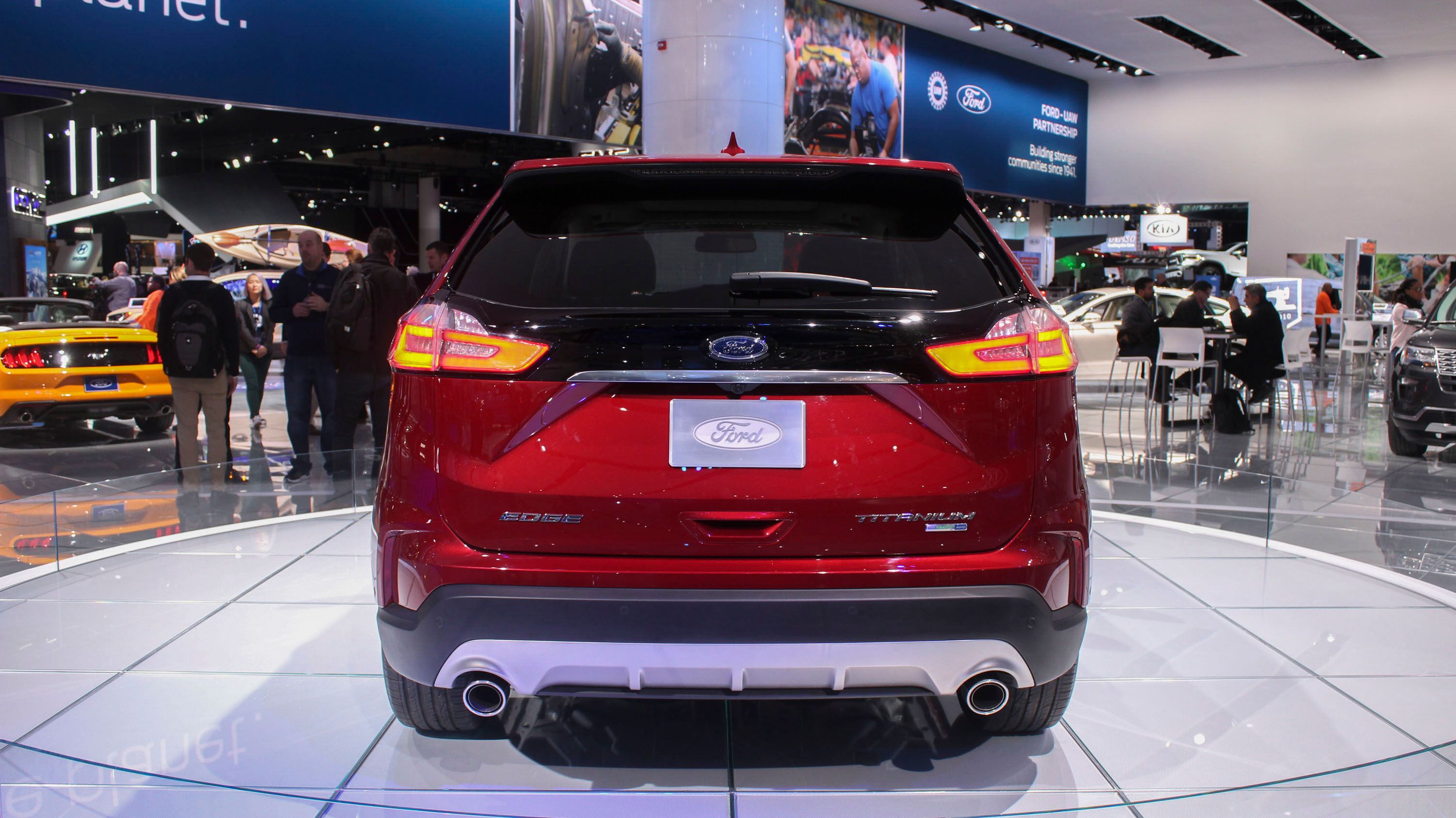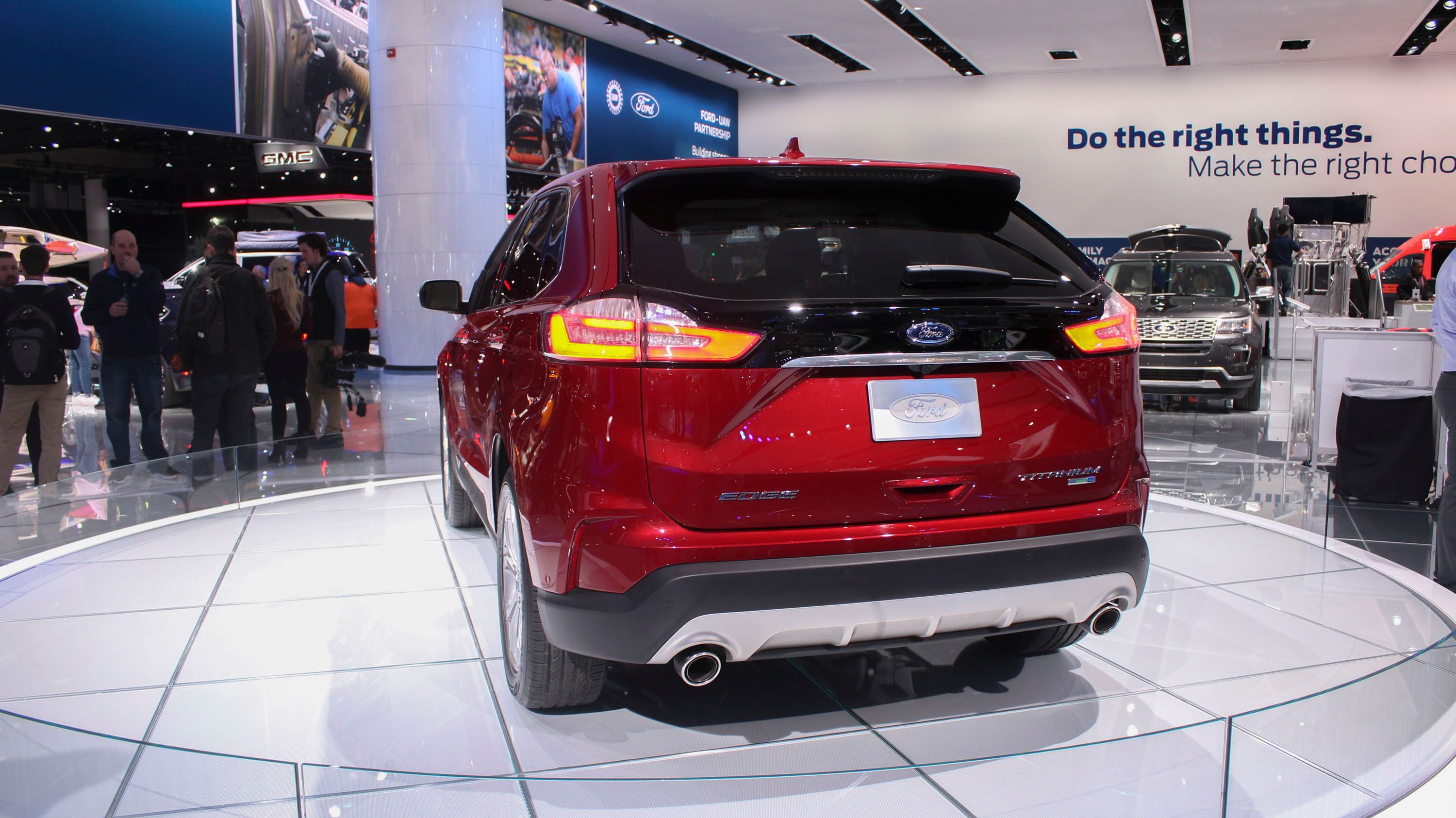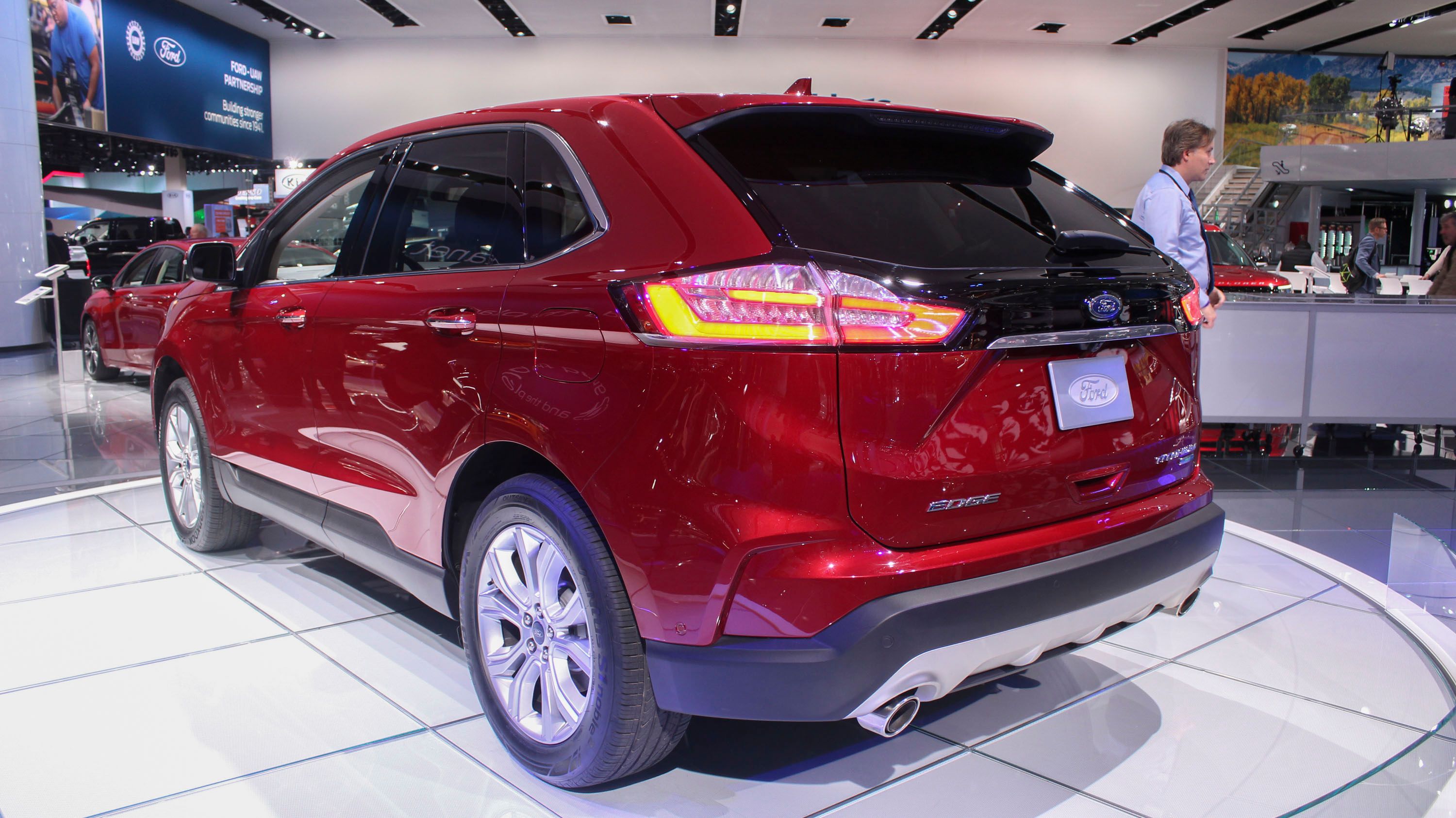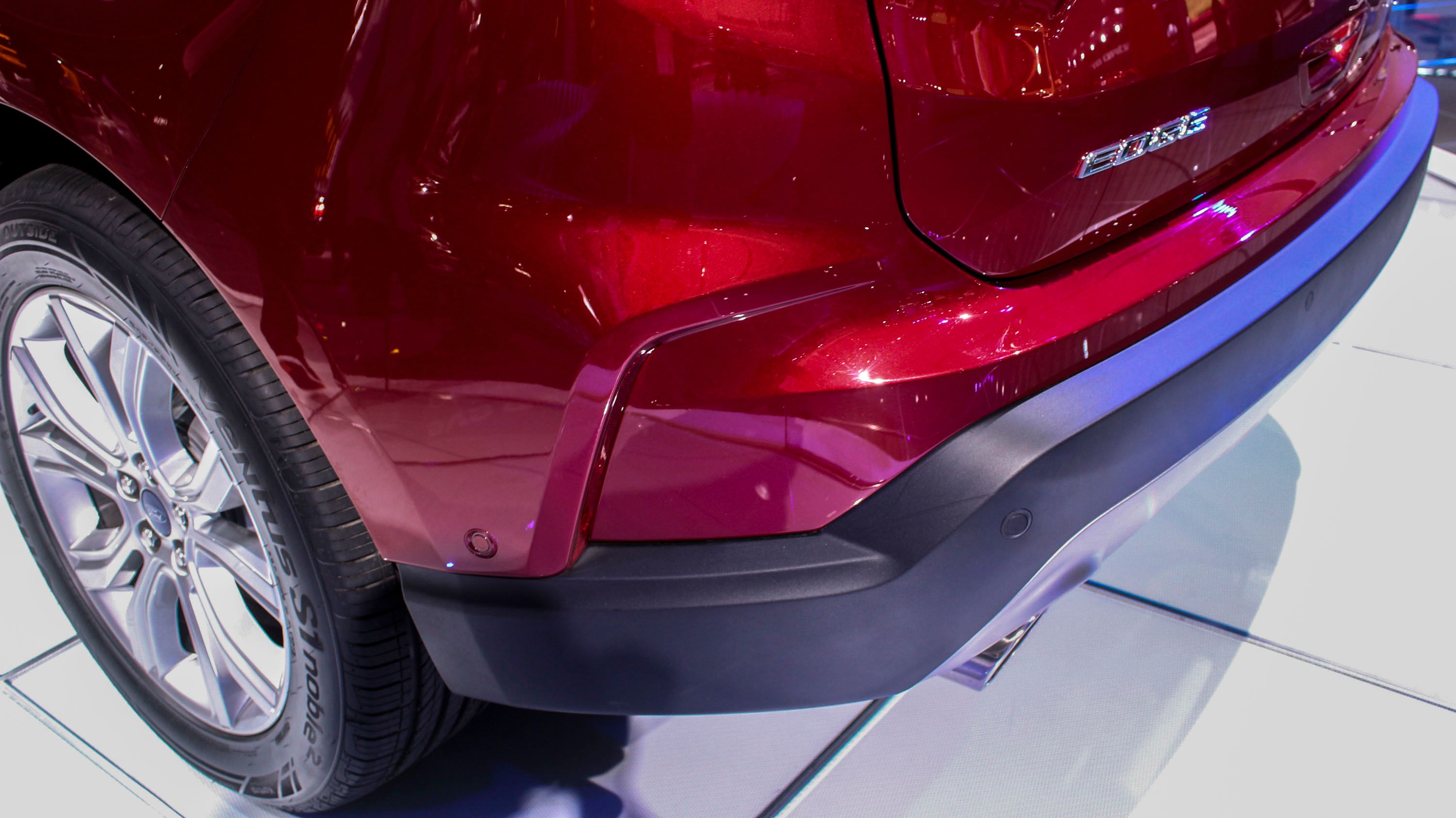The Ford Edge has been around since 2007 and its current generation debuted in 2015. But the second-generation Edge was getting a little, well, dull, so Ford has given the mid-size crossover a sharpening. This mid-cycle refresh for the 2019 model year brings revamped aesthetics, few minor changes to the interior, and a slew of active safety equipment. In fact, Ford is claiming the 2019 Edge comes with more standard driver assist features than any of its competition.
So what makes the Edge so technologically adept? Well, the standard safety features list is long. It includes Forward Collision Warning and Dynamic Brake Support; Pre-Collision Assist with Pedestrian Detection; Blind Spot Information with Cross-Traffic Alert; Lane-Keeping Alert; Lane-keeping Assist; Auto High Beams; and Hill-Start Assist. Basically, the 2019 Edge comes with all the latest (almost autonomous) driver aids without having to order an expensive option package. Here’s how the 2019 Ford Edge shapes up.
Continue reading for more on the 2019 Ford Edge.
2019 Ford Edge
- Make: Array
- Model: 2019 Ford Edge
- Engine/Motor: inline-4
- Horsepower: 250
- Torque: 275
- Transmission: eight-speed automatic
- [do not use] Vehicle Model: Array
<
Exterior
The pun about Ford sharpening the Edge for 2019 actually holds truth. The new model has a more angular design with crisper lines and harder edges. Like most mid-cycle refreshes, the majority of changes happen to the front and back.
Up front, the 2019 Edge gets a new, more upright grille, reshaped headlights, larger fog light openings, a restyled chin, and a new hood. The changes are subtle but help lend a more modern appeal to the crossover. The headlights are now also LED high and low beams as standard. The optional fog lights and accent lighting are LED, as well.
That same level of updates happen out back, too. The biggest change is the license plate relief; it’s larger now with the handle for the power-lift tailgate positioned closer to the bumper. It seems to give the Edge a taller, statelier appearance. The taillights are another big change. They move from having small internal details to larger, bolder sections behind the reshaped clear lens. Like before, they are LED.
The rear bumper didn’t escape the designers’ touch. The lower apron is restyled with a more pronounced (yet still fake) skid plate and dual exhaust tips. The bumper’s sides now have a faux exhaust vent cut vertically into the quarter panel. Beyond the modified bodywork, four new wheels and four new color choices span the options list.
Interior
Ford didn’t reinvent the Edge’s interior for 2019 but certainly gave it a few welcomed updates. In fact, all the changes take place in the center console. The shift lever has been replaced with a rotary shift knob similar to the 2018 Ford Expedition. As such, the knob frees up extra space in the console, allowing for vertically mounted cup holders along the right side and a coin tray along the bottom. Buttons for the automatic start/stop system and parking aids are located below the shifter, along with the electronic parking brake.
Inside the hidden storage compartment under the HVAC controls lies a wireless phone charger and two USB ports. The new physical smartphone integration goes along with the new FordPass system. It is Ford’s Wi-Fi hotspot with bandwidth for 10 devices. FordPass also allows the owner to access the vehicle via their smartphone. Services include operating door locks, locating the vehicle, and even starting it up.
Ford’s SYNC 3 infotainment system now comes with Amazon Alexa integration. Called Ford+Alexa, the software works like a standard Alexa personal assistant, letting users voice-control various things like calendar entries, navigation controls, smart home features, and several in-vehicle things like radio settings and media content. This all takes place within the standard 8.0-inch touchscreen display.
Speaking of the radio, the 2019 Edge offers an optional 12-speaker B&O PLAY sound system from Harman. SiriusXM and HD Radio are integrated as standard.
The 2019 Ford Edge continues with the same passenger and cargo space as before. The rear cargo space offers 39.2 cubic feet of room, but with the 60/40-split second row folded flat, the room expands to 73.4 cubic feet. Legroom is generous, too, with front occupants getting 42.6 inches and rear passengers getting 40.6 inches. Headroom is also respectable with both rows getting no less than 40.2 inches.
Drivetrain
Ford has also made some significant changes behind the 2019 Edge’s new grille. Gone is the 3.5-liter V-6 option. The sole powerplant is the carry-over 2.0-liter EcoBoost four-cylinder, well, save for the new Edge ST’s 2.7-liter EcoBoost making 355 horsepower.
But for those not getting the sporty Edge ST, the 2.0-liter EcoBoost should prove just fine. Ford updated the engine with five more horsepower over last year, bringing the total to 250, while torque remains unchanged at 275 pound-feet. Ford also promises the new 2.0-liter will be more fuel efficient than before.
Much of the efficiency improvements likely come from the Edge’s new eight-speed automatic transmission that replaces last year’s six-speed auto. The new gearbox should help the Edge realize a few more ticks on the highway fuel economy rating. A new automatic start/stop system is also added. The outdoing 2018 Edge with the 2.0-liter and FWD is EPA-estimated at 20 mpg city, 29 mpg highway, and 24 mpg combined. Count on the 2019 Edge breaking the 30 mpg highway barrier.
As before, AWD is optional.
Safety Technology
A big selling point for the 2019 Edge is the long list of standard safety features at no extra charge. On the active front, the Edge includes Forward Collision Warning and Dynamic Brake Support; Pre-Collision Assist with Pedestrian Detection; Blind Spot Information with Cross-Traffic Alert; Lane-Keeping Alert; Lane-Keeping Assist; Auto High Beams; and Hill-Start Assist.
Optional active safety equipment includes a few newcomers to the Edge’s toolbox includes Post-Collision Braking, Adaptive Cruise Control with Stop-And-Go and Lane Centering. There is also something called Evasive Steering Assist. It works by helping the driver steering around stopped or slower moving vehicles by adding steering input if the driver doesn’t quite provide enough action.
On the passive side, the Edge comes with the typical stuff like traction control, roll stability control, Ford’s Curve Control, and a 911 Assist feature. Dual front airbags, side-impact airbags, and side curtain airbags are also in the mix.
Pricing
Ford has not released pricing for the 2019 Edge at the time of this writing, but we expect that information sometime before the Edge reaches dealerships in the summer of 2018.
The current 2018 Ford Edge carries a starting price of $23,850 for the base S trim. The more middle-America SE trim starts at $25,605 while the mid-range SLE starts at $28,005. The range-topping Titanium trim starts at $32,045. We expect these prices to have a $200 to $500 increase on each trim level.
The Competition
Hyundai Santa Fe Sport
The Santa Fe Sport is like the Santa Fe, only without the third row and without any real sport. Get past the name and this of this as the Tahoe version of Chevy’s Suburban. Like the Ford Edge, the Santa Fe Sport is only a two-row crossover yet its larger size technically makes it a mid-size crossover. The same is true for the Nissan Murano below. That the Hyundai offers is a great deal, a solid warranty, and an all-around great package for the price. Its exterior is decently handsome and its interior is well equipped (especially in upper trims).
The Santa Fe Sport does offer several active safety features, but you’ll pay to get them. Things like blind spot detection, rear cross-traffic alert, lane change assist, a 360-degree camera system, adaptive cruise control, lane departure warning, automatic emergency braking, automatic high beams, and adaptive low beams are all optional features. Count on Hyundai changing this in the years to come.
The 2018 Santa Fe Sport comes standard with a 2.4-liter four-cylinder making only 185 horsepower. Standard on all but the base trim is the 2.0-liter turbocharged four-cylinder making a more respectable 240 horsepower and 250 pound-feet of torque. A six-speed automatic transmission is the sole gearbox, but customers can choose between FWD and AWD. Fuel economy for the 2.0T in FWD is EPA-estimated at 20 mpg city, 28 mpg highway, and 23 mpg combined. Adding AWD drops the numbers to 19/26/22 respectively.
Prices for the 2018 Hyundai Santa Fe Sport start at $22,200 for the 2.4-liter version. Hop up to the 2.0T in the base trim, and the price jumps to $28,350. The Sport 2.0T Ultimate trim starts at $32,650.
Read our full review on the 2017 Hyundai Santa Fe Sport.
Nissan Murano
The Murano has been around since 2015, but Nissan has added several active safety features for 2018. Standard features include Automatic Emergency Braking and Forward Collision Warning on every trim, Blind Spot Warning and Rear Cross Traffic Alert standard on SV trims, and adaptive cruise control as standard on the SL and Platinum trims. A new center console is said to be more user-friendly and the NissanConnect infotainment system with its 8.0-inch screen offers navigation, Apple CarPlay, and Android Auto.
Power comes from a single engine – the ole 3.5-liter V-6. It makes 260 horsepower and 240 pound-feet of torque and continues to pair with a Continuously Variable Transmission. AWD can be had for $1,600 on any trim level. Fuel economy is EPA-estimated at 21 mpg city, 28 mpg highway, and 24 mpg combined. Impressively, AWD does not affect fuel economy.
Pricing for the 2018 Nissan Murano starts at $30,550. The mid-grade SV trim starts at $33,850 and the SL trim at $38,250. The decked-out Platinum trim carries a base price of $41,980 but includes just about every bell and whistle as standard.
Read our full review on the 2017 Nissan Murano..
Conclusion
The 2019 Ford Edge might not be completely new, but Ford has done a great job at revitalizing one of its key vehicles. The Edge competes in an extremely competitive segment these days, so Ford has to offer its A-game in order to succeed. With so many active safety features as standard – plus new exterior styling, a new tech-rich center console, and upgraded 2.0-liter turbo-four – it seems Ford knows what customers are looking for.
We look forward to getting behind the wheel and experiencing these updates first-hand. Once that happens, we’ll bring you the in-depth coverage you’ve come to expect here at TopSpeed.com. In the meantime, check out our coverage on the 2019 Ford Edge ST below.
References
Ford Edge
Ford Edge ST Takes Detroit by Storm
Read our full review on the 2019 Ford Edge ST.
Ford Edge
Read our full review on the 2017 Ford Edge.
Read more Ford news.
Read more Detroit Auto Show news.

